Game Changers
Overview
Game Changers think and act differently. They’re eager to embrace transformational ideas and technologies and lead in the creation of new business models, disruptive approaches, and more effective organizations and processes. The BPI Network invites you to browse through our ongoing interviews with prominent Game Changers to understand and compare their ideas on innovation in 21st Century. Read insights »
Five big questions on innovation answered by...


Tanya Accone, Senior Adviser on Innovation at UNICEF
Tanya Accone’s career has focused on helping international public and private sector organizations understand how to amplify their impact through the convergence of people, technology and innovation. She is committed to applying innovation for social impact and as a public good, especially with and for young people.
How do you build organizations and cultures that embrace innovation and change?
Life-saving innovation for children has always been part of UNICEF’s DNA. We’ve been changing the game in the international development and humanitarian sectors by innovating at scale for decades, introducing solutions like oral rehydration salts in 1975, considered one of the most significant lifesaving innovations of the 20th century, saving hundreds of millions of children's lives.
Since 2015, UNICEF explicitly pursued innovation within a corporate strategy. We established the sector’s first Global Innovation Centre, launched the first Venture Fund, and introduced the first Crypto Fund. This has enabled us to push boundaries with frontier technologies such as AI, blockchain, drones, and machine learning, and develop a track record of effectively applying innovation for problem solving at scale.
Building beyond this foundation, the Innovation Nodes work I lead focuses on possibility-led innovation to unlock the potential of previously unknown areas of innovation for children in underserved communities. Through a process of systematic discovery and initial knowledge-based derisking, Nodes allow us to investigate "known unknowns" and "unknown unknowns" in fields like precision health, next generation renewable energy, and biotechnology, as well as practices like emerging business models in social innovation. This transdisciplinary approach allows us to engage and equally inspire others to act along the new frontiers that can contribute to transformative change for children worldwide.


Tony White, Executive Chairman at enChoice
Antony (Tony) White is Executive Chairman, enChoice. He has extensive experience in launching, developing, and managing technology-based start-up companies.
How do you build organizations and cultures that embrace innovation and change?
It’s a great question, because it really goes to perhaps the most important aspect. I just have one word to address that question: belief. You have to find something that you buy into, believe in, and then make. So what does that belief comprise? It’s a belief that must be acceptable for the business, in terms of market innovation and acceptance, and something that your people can really buy into.
In our case — we’re a 30-year-old organization — our strong belief was that there was just too much paper in the world. The key to the future was to digitize paper and employ it in business processes. While we weren’t the first to believe in that, we were one of the very early companies that commercialized this area in the mid-market. It was a critical component of how we started.
Although it took an awfully long time, this belief turned out to be very accurate in that it developed into unstructured content. All the various kinds of content in an email, e-business, social media videos comprise unstructured content, which is 80% to 90% of all the key information in any organization. In those days we just called it imaging, which was converting paper documents to electronic content.
With AI emerging, unstructured content emerged as a key resource for AI. We sort of got into a sweet spot. So that's how I believe we validated our belief and culture.


Paul McEnroe at IBM (formerly)
A distinguished engineer and technology leader, Paul McEnroe has played a central role in the development of a variety of industry-changing technologies. Most notably, he and a team he formed in 1969 while at IBM created the Universal Product Code (UPC), also known as the barcode, along with related products, that transformed the retail and grocery industry. McEnroe recently published his book, “The Barcode: How a Team Created One of the World's Most Ubiquitous Technologies.”
How do you build organizations and cultures that embrace innovation and change?
We started the bar code initiative because the CEO of IBM at the time, Frank Cary, wanted to expand the company beyond mainframe computers. At first, Frank wanted to find the best companies in Silicon Valley and buy them. But it was decided that no, if you buy small startup companies, the most important people would quit because they don’t want IBM culture. They don't want blue suits and white shirts and red ties and black wing tips, and all that garbage. Frank’s response was to try to find somebody within IBM and to get them to act like and treat them like they’re a startup. Luckily, they knocked on my door. We were able to decide what business we would go after. We wanted something that was going to generate data and decided to go after point of sale. We saw that at the point of sale, particularly for supermarkets but also major retailers, there was a big need for item identification, automatic inventory control and automatic checkout.
The barcode had a tremendous impact on operational efficiency and business intelligence. For big retailers like Macy’s, it had a major influence on their purchase orders and their ability to see what sold quickly and what was effective. It really helped them with reordering and stocking their stores much more effectively and efficiently. For supermarkets it was a little different. Item prices were constantly changing, and there was a tremendous expense at price marking and remarking. But with the bar code, it could go back into the controller in the back room and look up the price. In addition, the scanner could read omnidirectionally so it wasn’t necessary to orient the item to read it. Clerks could pull items across the scanner very quickly, which sped up checkout dramatically. You could also run tests on where to position products to improve sales.


Bryony Winn, President, Health Solutions at Elevance Health
Bryony Winn is the Chief Strategy Officer for Anthem, Inc., a U.S. provider of health insurance. Anthem is the largest for-profit managed health care company in the Blue Cross Blue Shield Association. She is responsible for developing Anthem’s Enterprise strategy and growth plans, as well as continuing to expand Anthem’s focus on delivering innovative solutions to all stakeholders. Prior to Anthem, she was Chief Strategy and Innovation Officer for Blue Cross and Blue Shield of North Carolina. Before that, she was a partner in the Chicago office of McKinsey & Company.
How do you build organizations and cultures that embrace innovation and change?
I believe strongly that to successfully transform an organization to embrace and lead on digital innovation and change… you must ensure innovation is both everywhere… and somewhere. What I mean by this is that you must instill an innovation mindset within every nook and cranny of the organization... while also dedicating a full-time team to the ambition. If you only do the former, you risk the effort stalling due to weak ownership. If you only do the latter, you risk creating a silo, innovating in a vacuum and in a way that doesn’t make sense or isn’t embraced across your business.
In sum, digital transformation requires a “yes, and…”not an “either/or” approach. You must drive cultural changes across the entire organization and set goals / launch dedicated initiatives within and owned by every single part of the business and build a team dedicated solely to driving innovation.


Anne Schlösser, CEO and Founder at studiomem
Anne Schlösser has spent her career in solving innovation and design challenges for start-ups, mid-sized businesses and large corporations in Europe, the US and China.
How do you build organizations and cultures that embrace innovation and change?
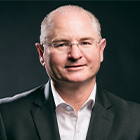

Rolf Unterberger, CEO at Cherry
Rolf Unterberger, CEO of Cherry Group and founder/CEO of RMU CAPITAL, is an internationally accomplished executive Manager with over 25 years of experience in different industries, countries and leadership positions.
How do you build organizations and cultures that embrace innovation and change?
Innovation was actually part of our DNA from the very beginning. And change is also an integral part of our company history. We have reinvented ourselves again and again.
CHERRY was founded in 1953 in the basement of a restaurant in Highland Park, Illinois, to produce electronic switches. The company quickly gained a reputation for the quality of its microswitches in particular, which became commonly referred to as “CHERRY switches.”
In the early 1960s, CHERRY expanded to Germany, creating a global brand known for key switches and high-quality computer input devices. In 1973, we began manufacturing computer keyboards. Today we are the oldest manufacturer of computer keyboards and a pioneer in the computer hardware industry.
In 1984, we filed a patent for the CHERRY MX switch. In 2008, CHERRY was sold off to a German firm called ZF Friedrichshafen, a company that specializes in parts for automobiles. In 2016, CHERRY was acquired by the private investment firm GENUI, and our focus shifted from automotive parts to computer input devices.
These are just a few milestones to show that innovation and change have always been an integral part of CHERRY.
To make sure this spirit doesn’t get lost nowadays, we are working and building innovation hubs internally as well as together with external people. Furthermore, we are running small innovation teams and projects outside the box or the so called comfort zone.
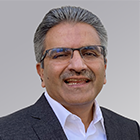

Dhrupad Trivedi, President, CEO and Chairman of the Board at A10 Networks
Dhrupad Trivedi, president and chief executive officer of A10 Networks, brings global leadership experience across multiple businesses and is passionate about driving leading technology businesses to win by creating value for customers.
How do you build organizations and cultures that embrace innovation and change?
I would say one of the keys to building an innovation culture is having people within your organization and on your teams that continuously challenge the status quo and have the ability to think about the biggest problems and challenges customers and markets are trying to solve and how your company can evolve to address them. Typically, that is going to require you to look at things from multiple points of view. You have to think about it from a technology point of view; you have to think about it from a user point of view; and you have to think about it from a structural and macro trend point of view. So, when I think about this, I think about organizations and cultures that are continuously connecting what they do with how they can help their customers and markets achieve value. This may include breakthrough technology, doing something no one else can do, but it is always about connecting what you do with your customers and markets. It may be your customers don’t really know the solutions they need, but still you need a culture that is always focused on solving the customer’s problem.


Mehdi Tabrizi, CMO and Managing Director, Customer Experience and Innovation at Moda Health
Mehdi Tabrizi is the CMO and Managing Director of Customer Experience and Innovation for Moda Health, a Portland Oregon-based health insurance company providing medical, dental and pharmacy insurance in Oregon and Alaska.
How do you build organizations and cultures that embrace innovation and change?
Prior to coming to Moda Health, I worked for one of the world’s most renowned customer experience, innovation and brand consulting agencies for over a decade. I was fortunate to partner with a lot of different companies around the world, from global Fortune 500 businesses to startups and across a very broad range of industries. My observation in working with those companies is that a culture of innovation requires a commitment at the highest level. That commitment has to include the right structure, resources and investments. Without that you’re not going to succeed in creating a culture of innovation. You might have an innovation project, but then it goes away. Once you have a strong commitment, you must have a strategy that is closely aligned with the company’s DNA and vision. If you’re a technology laggard, you cannot suddenly become a technology disruptor. However, you might decide to become a fast follower. You really need to have a strategy that fits within the context of your business. You also need to understand where your innovation focus should be, which domain you’ll concentrate on. Is it on the operations side, the product side, or the customer experience side? You also need to have the right structure and leadership that can build the necessary competencies in the organization and bring in the right staff and skill sets. Creativity is key to innovation, and therefore you need to have people with a creative background. Your innovation leaders need to have a rich understanding of what innovation is, how you build a strategy and how you put in place the processes to get there. It’s important to find people who are both passionate and can drive the innovation process. Finally, you must have the appropriate systems in place to support them.


Wai Wong, CEO and Founder at Serviceaide
Wai Wong, the Founder, President and CEO of Serviceaide, brings 36 years of experience from the high-tech industry into his current role.
How do you build organizations and cultures that embrace innovation and change?
It starts with the fundamental belief that we all have responsibilities to our customers, partners, shareholders and fellow employees. We have to believe that what we do is valuable to our customers and to the market as a whole. This is the foundation of why we have to keep innovating, changing and doing better.
I have found that some people that are incredibly innovative in one area (ex: technology, operational processes, business model, etc.) can be very resistant to change in other dimensions. Individual and collective mental inertia and the organizational mandates that reinforce the inertia are what makes change hard. However, if an organization takes things to the extreme on the other end of the spectrum, people often revert to becoming cautious and hesitant in fear of doing the wrong thing because there is no clear set path. Finding the middle ground by creating an environment with a foundation that is multiple faceted enough to stand even when major pieces are being modified is key to innovation. This allows people to support change to get to a better place with the understanding that the pain of change is a prelude to something better.


Eugene Xiong, Founder and Chairman of the Board at Foxit Software
Eugene Xiong's leadership as president and CEO has allowed Foxit Solutions to grow immensely and become a worldwide leader within the PDF industry.
How do you build organizations and cultures that embrace innovation and change?
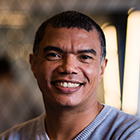

Andre Fredericks, Chief Information Officer at IndieFin
Andre Fredericks is a get-things-done strategist exploiting design and technology to solve complex business problems.
How do you build organizations and cultures that embrace innovation and change?
Life Insurance is a complicated product. It’s typically a grudge purchase made mostly because an agent convinced you that you needed it and assisted you over the purchase line. This in itself can be a complicated and drawn out process which could take a few weeks to complete, with underwriting and medical tests that need to be conducted. Life insurers also typically struggle in attracting younger clients which places pressure on long term business sustainability.
Indie has rewritten the narrative of purchasing Life Insurance away from “Protecting your loved ones when you pass on,” to “Not just insuring your life, but Creating Wealth." We do this by matching up to 100% of your monthly premium and placing it into an investment that generates wealth over time. It's all tax-free and costs our clients nothing.
We’ve been successful in attracting a younger audience with our fresh messaging and honest content. We don’t just want clients to buy our product, we want them to be financially savvy and make the right financial choices. That is why we keep on producing content to educate - not only for our clients but for everyone.
We view the entire customer experience and engagement as ‘The Product,’ which is contrary to the traditional view that only the Financial Product is ‘The Product.’ We actively leverage design and technology to deliver it in a seamless and cost-effective manner. With us, you can purchase underwritten Life Cover in as little as 10 minutes, or if you prefer, save and resume later, or chat with a live customer success agent for assistance.
We truly place our clients in the center of everything that we do. We view them as the true heroes of the story, which is their financial journey. We are only their guide. Our aim is to equip them with the knowledge and tools that will assist them in making the right financial choices and pave their way to financial freedom.


Robert Novo, Global Director of TCAP at BT Global Services
Robert has spent almost his entire career in customer facing roles because of the satisfaction he gets of seeing innovations being put into practice, particularly when making strategic decisions.
How do you build organizations and cultures that embrace innovation and change?
BT has established an operational model for some of our key, complex, globally-managed services customers, where we have separated the Information Technology Infrastructure Library (ITIL) functions that are primarily proactive, such as capacity planning, RCA/problem management and inventory management from the more traditional day-to-day functions like maintenance and incident management. The latter functions are supported by the network operations (NOC) team, while the team that supports the proactive functions as well as the network management tools is referred to as TCAP (Tools, Capacity, Availability, Performance, Problem). Under this model, I lead the global TCAP team that is part of a managed services contract for a multi-national, Fortune 200 insurance company with hundreds of sites and tens of thousands of network elements.
Because of this distributed operational model, BT is in a better position to engage in strategic planning discussions with our managed services customers; understanding their business plans and forecasts and their impact on the network. The team is better positioned to translate these business plans and forecasts into new requirements for analysis, reporting updates, and network monitoring and management tool features/capabilities.
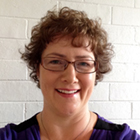

Helen Simpson, Head of Innovation at Ikabo
Helen Simpson is Head of Innovation at Ikabo an online collaboration and innovation platform based in Australia. She has led global teams to develop new products, insights programmes and innovation and communication strategies. She is responsible for brand positioning and communication, customer centric strategic planning, a customer driven product development pipeline and onboarding and training new clients.
How do you build organizations and cultures that embrace innovation and change?
Ikabo is an online collaboration and innovation platform based in Australia. Ikabo’s unique point of difference is that we don't just on board and train a new customer on to our platform, but we fully support clients on their first project, from framing the challenge to final selection of concepts to implement. Ikabo has also developed a fully automated customisable method of evaluating concepts into a rated and ranked order in order to help leaders make objective and democratic decisions.
Ikabo partners its clients to create a path to innovation success by working with senior leaders to ensure the vision and strategic intent of the organisation is aligned to the challenges that are posted on the platform.
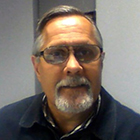

Leslie Fivaz, Chief Financial Officer at ALW Properties
“Innovation has become the fundamental aspect of all development; without it there can be no progress in the Property Industry,” says Leslie Fivaz, CFO for ALW Properties in Johannesburg, South Africa. Fivaz holds an accounting degree as well as an MBA from Oxford Brookes. He spent many years in the office automation industry before taking up this position in the Property Industry.
How do you build organizations and cultures that embrace innovation and change?
ALW Properties is a small yet dynamic and innovative property management and development company with its head office based in Norwood, Johannesburg, South Africa. We are a team driven by a passion for environmental conscientiousness in the design and development of commercial office properties.
Our latest flagship development, Atholl Towers, in Sandton Johannesburg is an environmentally innovative office building, offering world-class AAA-rated, 5 Star green office space for commercial property letting. Up to 50 percent savings are offered on energy and water costs, which is accomplished through:
- Recycled heating
- Energy efficient lighting and motion sensors
- Water saving fixtures and rain and ground water harvesting systems
- Waste recycling facilities
- Low volatile organic compound paints, adhesives and carpets
- Recycled and locally sourced building materials
- Energy efficient “REGEN” elevator facilities
- Cyclist facilities
We are determined to be and to remain responsive to a rapidly changing industry dynamic.


Diana Stepner, VP of Innovation Partnerships & Developer Relations at Pearson
Diana Stepner is the VP of Innovation Partnerships & Developer Relations at Pearson - a company which has been innovating since the Industrial Revolution. She helps business units accelerate digital innovation, drives global partnerships with startups, builds relationships with developer communities- including incubators and start ups- and runs the Pearson Catalyst for Education accelerator program. Diana's passion is to bring innovative user experiences, products, and partnerships to life by applying technologies that are not always ready for primetime.
How do you build organizations and cultures that embrace innovation and change?
We help teams across Pearson gain insight into emerging trends - what we call developments “on the fringe.” For example, over the last few years we have witnessed the consumerization of education. Students, teachers, and learners, for example, have similar expectations and behaviors in the classroom as they do outside. As a result, they crave rich digital experiences and believe learning can take place anywhere and at any time.
Acknowledging that technology is helping to drive change in education to deliver on the expectations of learners and teachers. We have been able to quickly identify and connect Pearson teams with startups - particularly through connections with incubators and accelerators (RocketSpace, 1871, 1776, MaRS and LearnLaunch). Then via Catalyst, Pearson’s accelerator, we’re able to build pilots collaboratively with the startups – all the while providing mentoring and insight that will help them grow and scale effectively. We’re also championing the next wave of creators and makers by being involved with maker spaces where learners of all ages gain hands-on skills, whether it be in electronics, arts, science, or beyond.


Michael McCarthy, Executive Coach at Harvard Advanced Leadership Initiative
Michael McCarthy is a serial entrepreneur, an executive coach at Harvard and MIT, and a strategy consultant to scores of start-ups around the world. Having founded six start-ups, McCarthy now guides some of the world’s most talented business minds at Harvard’s Advanced Leadership Initiative.
How do you build organizations and cultures that embrace innovation and change?
Just last week, I had a healthcare company from Tennessee wanting to know how to do intrapreneurship pitches in-house; how to pitch things like app ideas that might be approved by upper management.
There are the important basics for the intrapreneur process, like knowing who you’re pitching to, and what their needs and criteria are; what they say – pre-pitch – would lead to their green lights and their red lights.
But for the brainstorm phase, I coach a mastermind process designed to remove negativity.
First, we gather five to six people from very different walks of life – different genders and ages and backgrounds and business units.
The (originator) is asked to take three minutes to describe the idea or the dilemma or the challenge, and they have to describe the kind of solution they’re looking for – like “I am looking for a solution in the form of an app, not a new business division.” You have to be clear on the kind of solution you want. Then there is three minutes of Q&A, just to clarify the challenge or the problem. Then, the person with the challenge or dilemma has to physically leave the room and they take their self-limiting beliefs with them.
It’s important they leave because what they tend to do is interrupt too much – and say “oh, I tried that; that won’t work.” When they’re not there, people will be free to say the bad idea, and then leapfrog to a better idea.
The format we use in the brainstorming session is “yes, and,” where the response must literally begin with “yes, and,” which makes the shy people and the introverts feel safe. You can still disagree, but it needs to be in a positive way – one person can say “I think it should be purple,” and another can say “yes, and I think it should be any color but purple; but I might agree to maybe a shade of purple, like lavender.”
The person with the dilemma then returns to the room and just listens.
Recently, in Boston, for instance, this method led to a challenge for finding sufficient recharging stations for shared electric scooters being entirely reframed with this total solution: that pre-charged scooter batteries simply be swapped out by users at the scooter racks, and forget about recharging altogether.
And in Armenia – one of several developing countries where I have coached – the mastermind method provided an employment solution for returning refugees on either side of traditional working age, in an interesting social entrepreneurship challenge. The young refugees had few skills; and the seniors had skills but not the vigor to use them directly. So the group came up with the Armenian Shopping Network – based on the Home Shopping Network concept in the U.S. – with the returning Millennial refugees doing YouTube videos of the seniors teaching traditional Armenian cooking classes, and selling the products by mail. It turns out from the discussion that keeping the culture, the food and the language alive was particularly important in the diaspora. The young people do the social media, the baking and the shipping; the older people set up the recipes and the use cases.
When I coach start-ups, the first thing I do is to encourage them to consider doing a service business rather than using a manufacturing model. If there is a way to offer a product as a service, it eliminates so many problems, and you don’t have to worry that much about attracting venture capital and angel investment. Simply framing a business model around service stimulates innovation.
My second fundamental piece of advice is to make it a need, not a want.
The base challenges for startups in developing countries are quite different from those in the U.S. In Armenia, I observed that founders had a huge challenge with trust and personal cynicism.
People told me there’s no point in trying to start a successful business because the government is corrupt and they’ll just steal your business, so why bother. So, I had to overcome this very negative attitude that everyone is a crook. In an auditorium of 200 people, about half were incredibly cynical – that negative iron curtain mindset is a killer for start-up development. A lot of developing world entrepreneurs have a challenge around shyness, and the need to learn American style pitching – right down to the humor, and dealing with the apparent meanness of venture capitalists. They need to learn how to keep their self-esteem intact after rejection.
I must have talked to 1,000 would-be start-up founders, through my Harvard course on entrepreneurship, MIT Launch, Babson College and the $1 million Hult Prize.
In the start-up world, I think there is way too much focus on making a ton of money as a motivation to start a business. Just paying your own bills through your idea, not having a boss and doing what you want, when you want – could be immensely rewarding. Most start-ups don’t need to be focused on whether they’ll become a unicorn for the idea to be viable. Starting the Budi Foods business made me happy to be alive.
Just focus on the life that you want.

Nicole Alexander , VP of Innovation Practice at Nielsen
Nicole Alexander is a marketer and lecturer; the quintessential unconventional marketer who has an extensive background working in digital media with an enviable list of blue-chip brands. She leads the Innovation Practice for Nielsen China and in this role she advises clients on the importance of evolving consumer journeys to deliver stronger returns on investment while eliminating fragmentation of brand communication across channels.
How do you build organizations and cultures that embrace innovation and change?
It should start from both the top and the bottom of an organization. Where leadership enables a culture of inspiring teams to develop ideas around change, provoke them to act on that change and then develop a framework that supports test/pilots to scale innovations that can be successful.
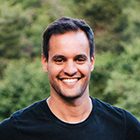

Hicham Sabir, Open Innovation Leader for North America at Philips Lighting
Hicham Sabir is the Open Innovation Leader for North America at Philips Lighting. He holds an Engineering Degree from French Engineering School Arts et Métiers and a Master of Science in Applied Physics from Chalmers University of Technology in Sweden. Prior to his current position, Sabir worked in Philips Lighting’s R&D and venture teams to build up Philips’ LED Lamps portfolio, professional systems and connectivity solutions. Sabir says the iconic global brand is responding to a profound disruption – connectivity – not only with leading connected solutions and optimized illumination but also with transformative new business models.
How do you build organizations and cultures that embrace innovation and change?
There are two significant trends driving the growth of the lighting industry and new innovations in lighting technology.
The first is increasing demand for more energy-efficient light. According to the US Energy Information Association, lighting accounts for 10% of total electricity consumption in the US. Switching to LED enables light-related energy savings up to 50% - and that number jumps to 80% when paired with smart controls. There is a tremendous retrofit opportunity as a significant portion of light points in the US still need to be converted to LED.
The second is the increasing potential of lighting systems and services that harness the power of digital light. Lighting infrastructure already exists everywhere that people live, work, travel, shop, dine and interact. From cities and stores to offices and homes, lighting systems are being transformed into information pathways with the capacity to collect and share data, and offer new insights that enable, and really drive, the Internet of Things. These lighting systems become a conduit to exciting new services, enabled by data, that make people’s lives more safe, inspired, and comfortable, make businesses more productive and profitable, make cities more efficient and livable, and make the world more sustainable and prosperous.
Connectivity will continue to proliferate as technology evolves and volumes drive costs down. The smart city is a great example of growth potential for connectivity. Globally, just 2 percent of installed street lighting systems are connected today, but this number is set to reach 35 percent by 2025, according to a recent market analysis from Philips Lighting. This represents a huge opportunity to help enable smart cities in order to improve public safety and services.
In retail, our visible light communication technology enables customers to have precise positioning of devices to help them navigate the retails stores and find sales, while at the same time providing the store with detailed analytics on what the shoppers are doing. In commercial buildings, connected lighting systems can collect, share and analyze data that uncover insights into new capabilities such as space optimization and employee experience. With technology that exists today, we can equip every light with a sensor that can collect all kinds of data points about the office environment and its uses. With these insights, there is so much more value that a building can afford its tenants, or companies offer to its employees, beyond illumination.
The Open Innovation team is responsible for the identification of disrupting trends and the selection of the startups and partners that will help us respond to those disruptions. My approach with the open innovation team is to be vocal about what we are trying to do and find the right partners within the greater innovation ecosystem who specialize in areas of technology that are complementary. Our overall innovation strategy is to grow the company in data-enabled services and build partnerships with organizations who we may not otherwise have dealt with – those with higher risk profiles, or larger companies within verticals we would not normally engage.


Nancy Selph, COO of Innovation & Data Governance at Deutsche Bank
Nancy Selph is the COO for Innovation and Data Governance at Deutsche Bank in New York. She manages the central team that supports the innovation function globally through labs in locations around the world. The labs collaborate with a global focus and share three principal goals: to help the bank evaluate and adopt emerging technologies, to develop a culture of innovation, and to contribute to the bank's digital strategy.
How do you build organizations and cultures that embrace innovation and change?
The idea of the lab presence itself is about giving people a space to come and think differently and engage with us. We run demand sessions with our business teams to get to the root cause of their challenges and then find solutions to meet those needs. It is the applied adoption of new technologies with a return on investment by decreasing risk, simplifying the environment or increasing revenue. By the time we have introduced the technology into the bank, we are confident it will make a difference.


Mark Manney, CEO and Founder at Infobeing
Mark Manney is the Founder and CEO of Infobeing.com - a website disrupting the forefront of human interaction and trade practices. Mark left his corporate life and Seattle roots to travel the world and study new ways of commerce. While practicing international customs and eCommerce abroad, Mark was able to identify a major issue in networking practices of the present. This led to his creation of an ideal People’s Economy via Infobeing. Mark believes that through innovative networking and modern trade, the People’s Economy will help lead the world to a more productive and healthier lifestyle.
How do you build organizations and cultures that embrace innovation and change?
It is tempting to say that there is no industry sector for what we’re doing, but in fairness we might compare Infobeing.com to social media like Facebook, Ello, Tumblr, and LinkedIn. These sites offer a Web 2.0 experience that is becoming obsolete for a few reasons.
Social media contributes to information overload by providing a massive amount of irrelevant information. This makes us feel physically ill. Information overload is becoming a real problem. Infobeing.com is different because it is designed so that users spend minimum time on the site and maximum time living, doing, and becoming.
Another problem with today’s social media is that there is no real mechanism to meet new people in order to easily form mutually-beneficial relationships. These sites are designed primarily for staying in touch with existing friends or, occasionally, meeting someone new in a random way. Infobeing is designed for the purpose of helping you meet the new people you need to know in order to move your life forward.
Social media leads to stagnation and inaction. It is passive. Infobeing uses the potential of the network world to create a People economy where everyone is doing what they want, what they are good at, just as they live in freedom and maximize their earning potential. This isn’t happening on Facebook.


Kim Smyth, Technology Innovation Director at AstraZeneca
Kim has more than twenty years of broad cross-industry experience in consulting and operational roles, focused on how to help large companies take advantage of new technology to improve top and bottom lines. She joined AstraZeneca in Australia in 2010, where she led strategy, digital innovation and patient program functions.
How do you build organizations and cultures that embrace innovation and change?
My team operates in Silicon Valley with three goals: bring Silicon Valley perspective and knowledge into our company; find and incubate new partners (especially start-ups) to demonstrate the power of new technology and approaches, and build a West Coast presence that leverages technology as well as life science leadership.
My team sits in IT, so we serve all therapy areas and functions. Technology is changing the game in many industries – or eating the world, as Marc Andreessen might say. We look for innovation that can bring medicines to market more quickly, or make therapies more effective. This could be re-imagining how we recruit or operate clinical trials, delivering mobile services that complement our medicines, or applying machine intelligence for clinical or patient support.
Our industry is complex, so we work closely with internal teams for the necessary scientific, clinical, and business domain expertise. We are a catalyst, empowering innovation rather than trying to own it in our team. This requires new technology skills in areas such as data analytics or IoT, as well as soft skills in communication, influencing and teamwork. We prioritize based on the importance that differentiating new technology plays in the opportunity, whether the potential value is incremental or transformational, and how closely the company matches our current needs and therapy area focus.


Martin Summerhayes, Head of Delivery Strategy and Service Improvement at Fujitsu
Martin Summerhayes is known as “The Billion Dollar Man,” having once innovated a billion dollar business for HP while also working as a field engineer. His expertise in customer experience and service needs derive from innumerable physical visits from his field engineer days, which have enabled him to create enhanced service models with a customer-friendly but up-front extended warranty. This innovation became a huge new revenue stream for Fujitsu, and a model emulated by many companies since its inception.
How do you build organizations and cultures that embrace innovation and change?
Fujitsu is an organization that manufactures everything from telephony systems to PCs, mobile phones, enterprise servers, mainframes - and much more. It operates in a software development space and provides solutions for customers.
In Fujitsu, we hope to bring intelligence, big data, analytics, predictability, and predictive tools together to answer big questions: How can we better track trends and anomalies? How can we predict failure before failure occurs? How can we drive preventative programs? How can we use our engineering workforce, our partner workforce, and our repair workforce to ensure our customers do not experience downtime? My team is leveraging software tools and partners, plus the knowledge we have developed to be able to look at that space.
A new type of service model called CARE uses intelligent engineering to drive and support the customer’s changing requirements. One of our prominent customers, McDonald's, is leveraging our CARE service to allow customers to pre-order and select a time for pick up before the customer gets to the store via an app on their phone; the customer can use a connected kiosk; customers have a choice.
Fujitsu ensures uptime and availability to those stores, which often operate 24/7.
As a part of the outsourcing space within my team, I look in how Fujitsu provides managed services to customers who have either IT products or It services provided by another partner we can take over.
From a game-changing perspective, ten years ago, there was IT outsourcing version 1.0 – where the company decided to move it to a partner who managed its IT provision on a holistic basis. Outsourcing moved through a tower model called IT managed services or outsourcing version 2.0, in which the IT provision breaks up into various towers. It is like an orchestra of independent companies playing together, or the company orchestrating it themselves.
My team is looking at how we provision engineering-type services, provided either remotely or on customer sites. It is how we provision and make available those engineering services to customers that is a key game changer. We hope to provide a service before the customer realizes they have a problem.
Fujitsu tries and pilots programs like an intelligent error engineering deployment for one of their customers in the UK. Their goal is to take it from white screen concepts to a working prototype within two weeks.
We are looking at augmented reality from our engineering workforce perspective. The ability to use a smartphone, and point at another device for both visual and providing verbal instructions to the engineer in the terms of how best to resolve the problem.
Fujitsu hopes to use virtual reality tools to train our engineers like "just in time training" - broadly scaling our engineering workforce in terms of a core set of skills.


Sean Shoffstall, Founder at Crave Metrics
Digital marketing entrepreneur and strategy innovator Sean Shoffstall is pioneering a more relevant and measurable approach to messaging in today’s multi-channel world of engagement. Shoffstall formerly delivered data-driven marketing strategies for Fortune 500 brands at Teradata. Now, he is a prominent speaker and thought leader who is widely credited for successfully leveraging the “Quantifiable Creativity” marketing approach.
How do you build organizations and cultures that embrace innovation and change?
I started Crave Metrics to focus on customer journey analytics. We are trying to solve misleading data with Crave Metrics by giving people a broader view of their campaign’s effectiveness across all their channels, because many marketers do not realize every campaign drives brand awareness and the end value that it creates.
Marketers look at a campaign and might see the click-through rate and the open rate, but they are not instantly able to see how it compares against other similar campaigns, or against their company's benchmarks.
Our platform will allow customers that review a campaign to not only see what their score is against the Crave Metrics key marketing measures, but also to see how it performs against the company benchmarks, and against similar campaign benchmarks. This answers the marketer’s question that many platforms miss today, I’ve got a metric but what does it mean?


Nicholas Vu , GM & SVP for Direct-to-Consumer at Adidas
Nic Vu, GM and SVP for Direct-to-Consumer for Adidas North America, discusses how building relationships is today's number one sales strategy. Through this game changer interview, he discusses what customer-centricity really means in today’s data-enabled, hyper-competitive brand environment, from the perspective of one of the premier performers in the global retail landscape.
How do you build organizations and cultures that embrace innovation and change?
We're obviously very well known for Kanye West, and co-creating products with his fashion, style and expertise. By leveraging our globally recognized brand and expertise with his product and personal brand, we are going to market with a tailored product that leverages the best of both sides. We strategically made a choice that we would co-create with our key partners to deliver the best products to their consumers, and we are now leveraging that open source strategy with a variety of different key partners.
We have opened up a product creation design house in Brooklyn called the Brooklyn Farm. We put our best designers there, and we are allowing customers – anybody who has a creative thought, anybody who wants to work with our brand – to walk in off the street and help us design products, give us new ideas; fresh thinking. We created an ecosystem internally with internal websites that allowed people to generate ideas, and their peers can vote it on their ideas. And that ultimately has driven thousands of ideas, including the very successful Avenue A initiative.
With Avenue A, I have to give credit to Mark King, my boss, who's the CEO of North America. He is well known as a major innovator in the golf industry, and he has subsequently initiated and built this relentless innovation culture for Adidas North America in the past three years. In year one, we were all raising awareness, educating people on the process around innovation. In year two, we started to cultivate this ecosystem of openness. And now that we're in year three, you're seeing the net results organizationally, both within the North American marketplace but also on a global organizational level. At the same time, we launched the Innovation Academy, wherein we created an environment in which people can learn, get an education; effectively get an MBA in innovation.
As the GM of Direct-to-Consumer for North America, I spend half of my time understanding consumer sentiment and listening to the ideas they have, and the other half of my time around merchandising and product.
What's unique about Adidas Group is that we were born in sport, and we're sporting goods athletic apparel and footwear company. We can basically be an athlete’s entire wardrobe, on-court and on-pitch, or as soon as they get off: we're there to support them through their own style and fashion as well. And we're a brand that wants to co-create.


Greg Smith, President at Blooom
In 2012, Greg Smith became an overnight game-changer in the debate for Wall Street reform, with his sensational public resignation in the New York Times: “Why I am leaving Goldman Sachs.” The former Goldman equities vice president is again tackling systemic inefficiencies and predatory practices in the financial world, but this time it’s in the retirement savings sector. Smith recently accepted the role as President of Blooom, a Midwest startup which was named a Word Top 10 Innovative Company (2015) in the personal finance space by Fast Company.
How do you build organizations and cultures that embrace innovation and change?
The US retirement space has changed significantly over the last few decades. People of a previous generation were more likely to receive a guaranteed pension either from their employer or the government. Today, Social Security is not enough to provide a stable retirement, and guaranteed pensions have largely disappeared. So Americans have to fend for themselves and are left with a legacy 401k system that was never designed for the middle class.
It has an overwhelming amount of choice, often high fees, and often poor selections of index funds. Many people are bewildered and overwhelmed by this complexity, and make no choice, often missing out on a decade of compounding returns. Others can make bad choices and pay away up to a third of their nest egg in fees, often without knowing it.
Blooom is the first company that has a completely fresh approach to the 401k space. We are an online service that analyzes any 401k, no matter where someone works. We then recommend the necessary changes. Finally, if the client hires us, we completely take over the management of their 401k – we make the changes for them, we keep an eye on the accounts, and we rebalance it over time. We are not a 'Do-It-Yourself' Solution. We are a 'Do-It-For-You' Solution. All for a Netflix-like subscription fee of $15/month or less.
We use the image of a flower (hence blooom!) to represent the health of the 401k, instead of complicated jargon or charts or graphs that no one understands. Clients love the simplicity and we have grown quicker than anyone else in the automated advisory space in the first year since formal launch. We manage 401k’s for people in 48 states, from age 22 to 67. Our mission is to fix broken 401k’s for millions of Americans.


Prith Banerjee, Executive Vice President & Chief Technology Officer at Schneider Electric
Prith Banerjee is Group CTO of Schneider Electric, a global leader in energy management and automation, with operations in more than 100 countries. With an EcoStruxure platform that defines its “Innovation at Every Level” business philosophy, Schneider leverages the most advanced data technologies—and an open, standards-based innovation strategy—for next-generation solutions and efficiencies. Its commitment to innovation is illustrated in an R&D budget of 5 percent of revenue and a dedicated architecture for incremental, new-market, and disruptive innovation, defined as Horizon 1 (core or short-term), Horizon 2 (adjacent or medium-term), and Horizon 3 (disruptive or long-term). Historically, its disruptive initiatives include pioneering aspects of IoT itself in 1996, and with recent technologies like arc-fault detection and its new IoT-enabled M580 automation controller. Today, its connected circuit breakers, protection relays and variable speed drives are already reducing machine downtime for customers with remote reporting of actionable data, while pilot projects are underway to slash downtime even further, with asset performance management IoT systems predicting faults before they happen.
How do you build organizations and cultures that embrace innovation and change?
We deliver to our customers low and medium voltage products and automation systems that are all integrated in several end markets: buildings, data centers, asset intensive industries, and utilities. We have a host of innovations throughout those areas, and we invest 1.3 billion euros on R&D. It is about faster, cheaper, better, so why do we need that deep level of innovation?
Over the next 10 years, the energy consumption in the world will increase by about 40 percent, and electricity consumption will increase 80 percent thanks to things like urbanization, industrialization, and digitalization; you must be three times more efficient to keep carbon emissions near neutral. We found that in the domain of buildings, only 18 percent are energy efficient, so there is an opportunity for 82 percent of untapped energy efficiency in buildings. Data centers are 30 percent energy efficient. Asset intensive industries such as oil and gas, mining, and metals are about 50 percent efficient. The grand problem we are trying to solve is making sure your energy efficiency is running close to 100 percent.
I work with the five business CTOs to harness the innovations springing from that $1.3 billion investment. Connectivity is a major part of the solution. We are on the IoT journey, and our innovation chain is tied to IoT and digital transformation. Connectivity is about bringing value to our customers, and it can be cost reduction, efficiencies, performance, or all of the above. It also promotes safety, and safety has always been a core value in our customer proposition.
We look at innovation in the portfolio approach. A large percentage of investment—about 70 percent—is on Horizon 1: short term innovations on our core products. With Horizon 2, we have products like Masterpact MTZ, which has an IoT and power monitoring capability. This is Horizon 2 or adjacent and medium-term innovations: bringing new technologies to the same product. H-2 also includes bringing the same product to a new geography, meaning bringing these circuit breakers to China or India with modifications. H-2 is about 20 percent of our innovation investment. Horizon 3 is truly disruptive and long-term innovations, and represents a lot of the stuff we are driving today, and is about 10 percent of our R&D spend. Some of them are seemingly crazy, but with huge potential to completely disrupt our industry.
I am responsible for all innovation, not just the digital parts. We are on the journey of IoT and digital transformation, and almost all our products—from automation systems to circuit breakers—are integrated with digital technologies. We are absolutely the market leader.
Our new products are taking the industry by storm, and I am completely proud.
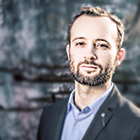

Sebastian Herzog, Co-Creator & Chief Strategist at Lufthansa Innovation Hub
Sebastian Herzog constantly moves between corporate culture and startup spirit. Herzog has more than 10 years of work experience within Lufthansa, including being the former executive assistant to the CEO of Lufthansa Group, while also founding his own fashion ecommerce startup OfficePunk.
In 2014, Herzog finally bridged both worlds by becoming a true corporate entrepreneur, initiating and founding the Lufthansa Innovation Hub jointly with internal and external top talents as a separate legal entity. Asked about the focus fields of the Lufthansa Innovation Hub, Herzog explains that he is not a believer in focusing on specific trends or technologies. “If you really want to change things, you have to focus on a specific customer,” he says. “Innovation starts with empathy and only with understanding the needs of a customer, one will be able to derive real improvements and innovations. In that sense, our only focus is the traveler and his or her needs. In an exaggerated way, I would say, 'customer interest beats company interest.'”
How do you build organizations and cultures that embrace innovation and change?
Three main differentiating factors between the Lufthansa Innovation Hub and other corporate innovation activities are:
1. Talent: Instead of “just relocating” existing line-managers to a fancy tech-location – we managed the challenge to get significant amount of entrepreneurial talent on board. Currently 80% of the Lufthansa Innovation Hub consists of people that have not worked for Lufthansa before.
2. Tool set: Instead of being a pure incubator, accelerator, technology lab, or corporate VC, we are deeply linked with the Lufthansa Corporate Strategy and pursue whatever innovation setup that is suited to a specific challenge.
3. Test-driven culture: Instead of writing five-year plans on whiteboards, we try to get instant market feedback, regardless if we are building prototypes and products or developing broader strategies.
This unique combination really allows us to support and drive the digital transformation within Lufthansa by supporting the existing business with startup partnerships and new products, (“better business”) as well as pursuing topics out of current business boundaries (“new business”).


Jorge Barba, Innovation Insurgent at Game Changer
Jorge is a global Innovation Insurgent and author of the innovation blog Game-Changer.
Jorge is known as the Puzzle Builder and Pain Reliever by companies such as FedEx Ground, TelVista, The Jumpitz, Tuni&G, IOS Offices and Chivas USA. This is because whether it's planning and executing strategies to improve processes, helping companies "wow" their customers, or creating new capabilities, products and services and launching them in the market; he's done it.
He is the Co-founder and Chief Strategist of Blu Maya. Connect with Jorge on Twitter @jorgebarba and LinkedIn.
How do you build organizations and cultures that embrace innovation and change?
Leaders that want to build an organization that innovates consistently must provide three things to employees: freedom, support and challenge. Those are the key ingredients needed to accelerate innovation in any environment. In other words, you can put it like this: Have bold goals, get out of the way and reward people for trying. The last point is very important because when people see that getting rewarded for trying, not getting punished, is like a badge of honor; they will start giving a damn. Try it, you'll see.


Alex Blanter, Partner: Innovation and Product Development, Digital and IoT at A.T. Kearney
Alex Blanter is a partner and leader of A.T. Kearney's innovation practice. Armed with over 20 years’ experience in driving high-tech business growth in Silicon Valley and beyond, Blanter is a global thought leader on new technology deployment for enterprise-scale businesses, and on novel solutions for complex problems.
How do you build organizations and cultures that embrace innovation and change?
This technological and business model transformation we are living through actually requires companies to innovate differently. The set of innovation practices companies could rely on to stay in the game – even recently – are no longer sufficient. In the past, and even the most recent past, the main philosophy was that innovation is a science – that you can go through a number of predictable steps: create new ideas; decide which ones to invest in; have an efficient development engine that gets those ideas to market; and manage your portfolio in the marketplace.
What’s happening now is that the level of disruption is such – and the level of fluidity is such – that this is no longer enough: you now need to plug into the ecosystem of these new technologies, and monitor your broader role in the marketplace. I explain it to companies this way, especially for larger enterprises: you need to play the long game fast.
As we know, the capabilities deployed from new technologies allow you to do amazing things. But out of those 50 amazing things you can do, we assess which of those will actually deliver the most value within your timeframe, and what you need to do within that timeframe to take maximum advantage. Some of these technologies, and corresponding opportunities, are mature enough that you actually need to jump on the bandwagon and start developing a product right away, or start implementing a feature. Some technologies (and business models) are farther out, and therefore you shouldn’t do that – but you do need to engage with the ecosystem and monitor the development of those technologies so you are in the flow, and are not left behind.
Whether you look at IoT, or AI, or Big Data, or any one of those fundamental tech shifts – and even the business model shifts – we see that they are affecting the majority of the industries in a way those industries are not used to. Companies are either seeing real benefits or are suffering.
Take IoT, for example. If you think about being able to source granular data in real time, process it and effect change back in the physical environment, you can think about all kinds of examples of solutions. Look at LA, where drivers lose millions of hours a year just looking for a parking space.
If I can instrument my parking garages so that they can show the absence and presence of cars in specific parking spaces, and if I can couple it with positioning sensors in the cars so I can understand where they are going, I can actually create predictive models where I can direct drivers to the places which most likely have open spaces at the time of their arrival. I can even predict when a space will likely become available, or at least predict turnover on average stays. I’ll know that 15 cars are leaving every 5 minutes. If I install sensors in various places in this whole use case – then think of it as a use case with multiple players – parking garage; traffic controls; individual drivers. I can actually collect and connect that information to optimize the whole use case and deliver value to multiple players at the same time.
At a strategic level, we’re helping companies figure out how technologies like IoT present a potential for disruption: in some cases, fairly minor, which can be dealt with in the normal course of business, but in other cases, the disruption will be fundamental. And the challenge is not just that they will be fundamental, the challenge is that they will sneak up on you. These start as an interesting curiosity, but before you know it, you are behind the curve.
Industries with significant capital assets like oil & gas are not going to be displaced by the next Internet company, but they can be materially affected from a competitiveness point of view. If some competitors start instrumenting their assets and increasing their asset utilizations – e.g., predictive maintenance based on predicted wear – that will be a competitive game changer that will demand a response.
Let me give you another example. Let’s say you have a logistics company with warehouses, which you might think is not a very cutting edge business. You will find that as simple a thing as a garage door can be the focus point for a significant opportunity. Residential garage doors in the U.S. have some level of automation at around 80%, but only about 30% of commercial doors are instrumented in any way. By 'simply' installing automation and the sensors on the garage door, you can significantly reduce energy consumption, because you’re otherwise losing all that heat or AC to the environment – and who thinks about keeping the door closed? There is nobody in charge of closing the door within 10 seconds of a truck coming in. Then you go a step beyond that – with algorithms that allow me optimize goods and truck flow through those doors, and that creates additional opportunities from the same technological solution.
At A.T. Kearney, when it comes to innovation and disruption our differentiators are three-fold.
First, we have a very deep understanding and knowledge of the industries in which we operate. So, for a project we did recently for an insurance company, we brought our financial services group and our high-tech group together, both to the pitch and the project.
Also, because many of us here are engineers or technologists by training, we come into all of that with a very pragmatic lens. Its very easy to get completely absorbed into the hype: “Okay, robots and Big Data are taking over the world; AI is the next best thing since sliced bread; IoT is nirvana.“ And to present big messages and great forecasts. But where it becomes valuable for our clients is our ability to actually translate that into what it means for their business, now and in the medium and long term, and how they need to respond to it in very pragmatic terms. Very few companies have unlimited money – therefore, while you can have the best strategy, you still need to be able to make the right choices.
A third differentiator is that we are truly a single global partnership; there is no friction in bringing together our capabilities in the Silicon Valley and in Korea or Germany. Many of our competitors are regionally or even locally structured, so they have a more difficult time in bringing a global perspective to bear. What we can help companies in a very collaborative, open way, is to really drive to a better set of choices that will allow them to do what they need to be successful in this ever-changing landscape.
Beyond the right choices, companies are faced with the need to incubate things that have a much longer gestation period. If you are an automotive insurance company, for instance, instrumenting all the cars in order to take all their information will change your business model, from a statistical, actuarial model to an individual use model. But you’re not going to instrument old cars en masse, only new cars, and you’ll need to achieve fleet thresholds – so its a 5 or 7-year horizon. Look at what’s happening at Intel – the pre-eminent chip company is laying off 12,000 people, and its because they were not fast enough; not agile within the ecosystem when it came to mobile. With the new technologies, that agility will be even more important.
I have looked at how innovation has evolved, going way back. In the Middle Ages innovation was mostly considered magic, and the winner became a tribal chief and the loser possibly was burned at the stake. In later centuries it was then driven as art, and it evolved to a more or less a science by the end of the 20th century. We are in transition right now, and it is now fundamentally culture driven – a culture that requires rapid experimentation and constant involvement in the ecosystem.
Even the recent past, when you were innovative, your prize was your position of dominance in the market. What you have now as a prize is simply an opportunity to innovate again; that’s all you actually get. Just science isn’t enough; you actually have to change the DNA of the company to innovate differently.
Different industries will move at different speeds. The number of technologies that are now available for a broader set of industries and how those technologies interplay with each other is fundamentally changing the business environment.
Before, you had communications and computing at certain speeds, and sensors at a certain cost – when you put them together, each of those things was useful, but they were not reinforcing each other. Now they are all at the level of cost/performance where you can put them together in a way that creates completely novel outcomes. They are no longer additive; they are multiplicative.
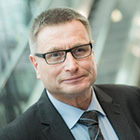

Otto Schell, Member of the Board of Directors at DSAG
Schell is a Member of the Board of Directors of the German speaking SAP user group (DSAG), specializing in business processes and digital transformation. Beside this, he also runs the bi-yearly Globalization Symposium for international user communities.
How do you build organizations and cultures that embrace innovation and change?
Others try to be on the political side; some try to be advisors, but what we really offer is the practice. What we can deliver on is the knowledge and experience of 3000 company members – both large and also midsized.
We ask – are you prepared for 24/7? Are you prepared for changing from products to services? Are you really cyber-ready? I am talking a lot about IoT – we need to change in terms of its promise. How do we motivate this group of people who are doing IT business processes to adopt new business models to reflect these capabilities?
Many leading companies are evaluating the importance of digitization, and new business models, and I see a responsibility with vendors such as SAP to inform and accompany them in their transition to a digital future. I want to ensure people are aware of what they need to think about – to get from digital to practice. We don’t know everything, but we do know there will be huge change. Companies will really be out of the game if they don’t change their business models. There are companies which do sensoric very well, but they don’t understand the business models, and there are those with good business models, but no clue about sensoric. We must bring those together.
Business model development and innovation needs to have an iterative approach, not a sequential process. I think IoT will change asset-rich industries in a positive way – you’ll know the usage and change in your assets. You can add sensoric to 10 year-old assets and derive a longer lifecycle. The question is how you change your business model around it.
In terms of the mix of skills sets companies will need, what we see going on in the European ecosystem, for example – universities; schools – is that there is a lot of momentum to embrace a positive attitude about change. The question is only how far to take this attack mode. It is difficult to understand what’s going on regarding China and India – they are so huge. Everyone in the west knew Amazon; not many knew Alibaba, and yet Alibaba is much bigger than Amazon ever will get.
In Germany and Switzerland, and really Europe in general, there is nothing we can do anymore in terms of extracting materials from the ground. All we can provide is knowledge. In recent decades, our exports have been dominated by engineering; by producing the best machines. But knowledge is the future. Nevertheless, too many executives tend not to take the opportunity, and wait for others, which is a pitfall. More acting than (worrying) is the right thing to do.
Some organizations still believe they can run with isolated strategies – with marketing/sales and production/purchasing in isolation. I firmly believe you can no longer do this alone. Companies need to have a clear glide path of where they want to go; they need clear buy-in that transformation is both top-down and bottom-up. What I think companies normally don’t do, and what they should do, is to really attack markets. Uber attacked. Do you really believe that if Uber had entered the market in the normal, slow way, analyzing and checking everything – they would have succeeded? They did not wait. Many other companies should also move away from a risk-awareness position to attack mode.
They need to ask: How can I attack other areas where I am strong? Many companies believe they are world-leading, and then some company in China, or Korea, or India has already overhauled them from an income perspective.
Executives must ask: are we ready for the shared economy? Are we truly cyber-ready? A lot of people talk about data analysis and big data, but at the end of the day its not about the big data – its about finding a pattern from the data which creates a new business model.
Too often, this is not what companies do. We analyze to death; we prepare for a presentation, and we wait for someone to make a decision. And when the CEO makes the decision, they are not ready for that decision because they are too large. The way of working together needs to change.


Scott Carr, CEO at Modria
As CEO of Modria—the pioneering Online Dispute Resolution (ODR) platform—Scott Carr provides businesses and government agencies globally with a transformational tool for fast and fair resolutions, customer service efficiency, and even brand loyalty. The model provides a unique pathway to justice and institutional trust for global consumers, and is rapidly growing beyond transactional disputes. After 15 years of development and technological enablement, ODR itself has surged beyond its initial brief of legal cost savings and eCommerce complaint solutions to become a game-changing catalyst for brand building, civil justice access, and marketing intelligence. Carr says that between one and three percent of all transactions go wrong each year, and that clogged Small Claims courts are unable to cope with either the volume or the cross-border jurisdictional nature of online disputes, while consumers have neither the time nor the resources to pursue them through traditional channels.
How do you build organizations and cultures that embrace innovation and change?
We have created an online platform for online dispute resolution (ODR) that can resolve disputes of all kinds from eCommerce to relational disputes, and we are available to companies, government agencies, and ADR organizations, to deliver fast and fair resolutions across these categories. We have done a couple of things that I think are unique. One is that we built a configurable platform that has all the modules of dispute resolution that can be snapped together in different ways to solve particular needs. No one else has built a platform like this. We think of online dispute resolution as a business process or a civil justice process, and it is kind of like how salesforce.com created the CRM category—we have not seen anyone else do that for DR; it is like this underserved business process. Secondly, we built a team with a unique composition of experts, mediators, arbitrators, and technologists. Some are experts in building technologies in start-up environments, some have done international Mediation and Arbitration work, and some are just experts in ODR. No one else has assembled a combination of talents like this. We design the resolution journey, and in that way, we bring people together.
The platform is a click away on websites where you are transacting your business: an online marketplace, or a merchant’s website, and in some jurisdictions on an ombudsman site. We are increasingly working with ombuds organizations, especially in European jurisdictions. Europe has started to pass laws that require online businesses to provide online dispute resolution. In addition, we have innovated a SaaS-based business model focused on the value of making our customers’ customers happy. We deliver our platform as a service subscription, and the price depends on the number of disputes the customer runs through the platform. The more disputes you have, and the less you pay per dispute. We deliver value by making it more efficient for you to resolve a dispute—including resolving it through automate software—and making your customer happier.
ODR is changing the traditional customer service role: Modria is reducing the number of customer contacts in the call center for a problem transaction, and freeing the agents up to do more account management, up-selling and outreach into the customer base. In customer service, for a typical US company, if I pick the phone up and call, and they answer my call and try get me a basic outcome, it is going to cost the company about 12 dollars for labor, technology, telecommunications, and overhead. That is before they pay me any compensation. Our system brings that cost down from 12 dollars to four dollars and eighty cents. We do that through the reduced contacts because we are resolving issues in software; for marketplaces, we resolve issues between buyers and sellers without CS having to get in the middle. We typically serve the space that you might classically think of as Small Claims. Our disputes usually involve 25,000 dollars or less, but resolutions are tailored and often involve solutions beyond dollars that might satisfy the customer. With an eCommerce site, the value is often 25 dollars to 150 dollars, but we also, for example, resolve insurance disputes. We have a large caseload in the state of New York, and with New York No Fault insurance those claims are higher because they are related to medical bills, but they are still not millions of dollars.
We have spent a lot of time innovating the user experience, and trying to package up what we call resolution flows. What we see is that there are patterns of commerce and the disputes that arise from them. A typical problem we see from customers is that they didn’t get their item. Or they did get their item, but it was not the way it was described on the website. We innovate by pre-building the resolution process, so we give our customers a jump-start when it comes to deploying online dispute resolution. They do not have to start from a blank piece of paper. We synthesize decades of experience in this. We are working with major airline companies on delayed flight compensation, and so far it is working well. If your flight was six hours late, and you missed a meeting, how do you build that resolution flow and make it available to multiple jurisdictions?
Most disputes are resolved in the diagnosis and negotiation phases, and then there is also a neutral party in the mediation module. Beyond that, there is the arbitration pathway that also sees resolution in a short time, relative to the courts. We are now in a regulated process; decisions are typically given by retired judges who are arbitrators. All their decisions are published online, and are searchable. In a lot of ways, it looks like an online court, and is legally binding—a process the injured party opts into.


Amine Ayad, Head of Workforce Management at Bed Bath & Beyond
Ayad sees a trend in the retail landscape where the front end registers disappear, and where check-out lines are eliminated through predictive data analytics, sensors, and artificial intelligence – and, eventually, where self-driving shopping carts meet you at the entrance of the store with your shopping list already uploaded into the cart screen, and even direct you to the items you need.
How do you build organizations and cultures that embrace innovation and change?
I really don't know whether we are changing the game or the game is changing us. Success in business, today, is all about the optimal intersection of the physical and digitals worlds, and the interaction between humans and intelligent machines.
If you really think about the retail industry, so many innovations have compelled companies to start to think different, to act different, and to plan for potentially different outcomes. Within workforce management, for example, the industry is going through tremendous shifts due to the expansion in internet selling coupled with rapidly changing demographics and regulations. Thus, brick and mortar stores are under a different type of pressure. And it is said that necessity is the mother of all inventions, so many organizations find the dynamics of the environment and the accelerated speed by which innovation is happening a threat and an opportunity leading to new strategies and innovations.
I’m of the opinion that societies change slowly, and despite so many years in e-commerce rapid growth, e-commerce is still a fraction of the total retail and service industries. So, it is going to continue to be a combination of digital and physical for the retail industry. Many organizations are utilizing data - predictive modeling, advanced algorithms - to better forecast work in the stores. And once work is forecasted and measured, then it becomes easier to schedule people to be at the right places and times - either when the truck is coming to the store to deliver products, or when customers are coming to the stores to receive a service.
You need optimizing software to help deliver efficiency. But no one platform is going to be the only and the ultimate solution. I think what's so clear, at least in my mind, is that the future is a blend of the digital and physical capabilities.
Based on my academic and my industry knowledge, I can tell you that customers want to shop anytime and anywhere. Leading retailers, including Bed-Bath, want to serve customers wherever, whenever, and however they wish to be served. Leading retailers want to be there for customers when they want to shop, the way they want to shop, and the way they want to complete the transaction, whether it is “ship it to my home” or “let me pick it from the store”, or a combination of both.
What's exciting about the current technology is how friendly it is to everyone involved. For example, 10 years ago you had to go to the store to see your schedule as an employee. And the manager of the store ultimately decided who worked when. There was little freedom or flexibility. Today, technology allows you to see your schedule on your phone, and even to opt for available shifts. Employees can swap shifts with their coworkers if they need to, without disrupting operations. This is a significant win-win change.
The technology is not only allowing organizations to respond better to customer needs, but also to employee's needs and situations. It's becoming more participatory versus top-down. And it is proven in research and in practice that happy employees create an environment of happiness for the customers. Efficient workforce management is beneficial to customers, and to the business. That's why companies invest in them.
In terms of benefiting from customer insights, today, you can measure and map customers’ movement in the stores from the entry point to the exit point through sensors. Based on data, you would know exactly, or on average, know how long the customers will be shopping in your store. Eventually, you would know when they're going to get to the register. Ultimately, you will be able to know the number of employees that need to be at the front end to help the customers exit the building and pay for the merchandise. So, it is not just long-term predictive modeling, but on-time, live, as you go, so that there will be totally no long lines up front for customers who choose to interact with an employee, and managers would be able to respond faster to customers’ needs.


Sam Miller, Senior Counsel at Dykema
Innovation and creativity are at the core of Sam's practice and view of the legal profession, and he has for some time now been involved in projects which seek to use technology to change the way in which legal services are delivered and purchased. Sam is the founder of the pioneering online legal advice platforms, VirtualLawDirect, and SvPerbar which use technology to make lawyers, legal advice and pricing more accessible, transparent and efficient, with an emphasis on standardizing legal advice and providing access to flat-fee legal products.
How do you build organizations and cultures that embrace innovation and change?
This is not an easy prospect by any means, particularly when working within an established and age-old profession. Change is seen as a threat to existing stakeholders in many cases, but law firms are beginning to realize that through pure market forces alone they will eventually be required to innovate in order to compete. I have found that having an international perspective on how things are done helps to instill a desire for change, not only in seeing how different work cultures operate, but also in appreciating the broad inter-connectivity that we now all experience, the need to keep ahead of the pack to serve clients' more diverse and ever more challenging expectations, and to compete effectively. Giving employees and partners the latitude to experiment with ideas and, perhaps more importantly instilling a culture of respect for different ideas and initiatives is a key element which law firms have traditionally struggled with given their hierarchical structures. To innovate, I believe that you need to instill a framework for acceptance of differing and new ideas and the creative potential of your people. This is a fundamental cornerstone, particularly for the legal profession, for building organizations which can successfully embrace change.


Robert David, Director of Corporate and Professional Programs at University of California, Berkeley
Robert David is Director of Corporate and Professional Programs at the University of California, Berkeley - UC Berkeley Extension. He has more than 20 years in key sales and business development operational roles inside several technology companies. He specializes in helping HR and Learning & Development professionals bring Berkeley-quality curricula to their companies through custom on-site training, sponsored tuition enrollments and intensive course program development.
How do you build organizations and cultures that embrace innovation and change?
Within UC Berkeley Extension, education innovation is highly valued. We tend to look for examples outside the organization and compare those with opportunities inside the organization, and then try to create an innovative approach to solving our objectives. Then communicate the value internally and embrace the change. But that's all very theoretical until you consciously try to do new things or do the same things in a different, more efficient or more effective way. It's very important to work at it. We tend to do 'pilot projects' to prove the concept and see what the outcomes are from both a financial and student satisfaction perspective.
It's also very important to recognize and encourage ideas for innovation from all levels of an organization. These ideas can be simple changes to business processes to large shifts in strategy involving relationships to customers or vendors. Don't underestimate the value of simple changes--in empowering the people who come up with them and in keeping the organization agile and welcome to change. We also like to use successful models or processes in one academic program area and try to apply it to completely different academic areas to see if it will work as a controlled experiment. Our Dean likes to share examples of how we innovate, or how we focus on quality of student experience, or work more collaboratively in all-staff meetings to inspire staff to bring about change.


Pieter de Villiers, Founder and CEO at Clickatell
Pieter de Villiers is responsible for establishing Clickatell as the world’s leading mobile messaging provider, enabling tens of thousands of enterprises and millions of consumers to interact, communicate and benefit greatly via their mobile phone. De Villiers has led the organization through a decade of robust growth and innovation by providing high value, application-to-person (A2P) SMS services to banks and other financial services providers, governments, social communities, and a myriad of mobile developers in several additional vertical markets.
How do you build organizations and cultures that embrace innovation and change?
Building an organization or culture that embraces change is no easy task since both are a reflection of its people and most people do not like change -- we are, after all, ‘creatures of habit’. However, I’ve found if the change or innovation is focused on efforts that improve, enhance, or simplify things you are already doing, it is generally accepted by smart organizations. You can then get those same smart people to innovate in areas outside of what you do today as long as you provide a clear “Vision” and “Why” to your people.
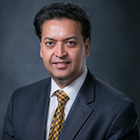

Saum Mathur, SVP for Big Data Analytics and Information Management at CA Technologies
CA Technologies has emerged as one of the world’s largest independent software companies, based on a mission to "create software that fuels transformation for companies.” Its consistent approach, across 40 countries of operation, is to remove obstacles in companies’ journey to success within the application economy, providing solutions on everything from digital transformation and security to customer experience and speed-to-market – and to bridge the gap between ideas and business outcomes. In March of this year, CA Technologies was recognized among software leaders as a “2017 World’s Most Ethical Company” by Ethisphere Institute.
How do you build organizations and cultures that embrace innovation and change?
The CA Technologies Business Analytics team is a global corporate team that provides business insights to stakeholders across the company, including sales, marketing, customer support, customer success, product engineering, HR, finance – you know: everybody.
The charter of my team is to help improve the top line of the company by changing our culture so that decision-making is very data and insight-centric, enabled by analytics. We have been quite successful in that goal.
Today my team is changing the game by influencing the strategy and operations of the company. We are helping personalize the customer experience at every touchpoint by injecting customer insights at every point of engagement. In that regard, especially when it comes to large enterprise software companies, we are unique. In fact, over the last year, Forrester has published 'best practice' reports that have cited what we are doing at CA.
If you think about retailers like the Amazons, e-tailers, and Googles, they all have B2C models that have used analytics to propel their business forward. We are leveraging concepts from the B2C world and bringing them to B2B, specifically in an initiative to transform CA from a traditional B2B enterprise software company to what we call a B2I, or “business to individual.”
This is a response to how buying software has changed drastically. Millennial buyers have a very different mindset, even when it comes to enterprise buying. They are higher risk takers as compared to the traditional CIOs and the baby boomer buyers, which means they will not sign very large enterprise deals. They want smaller scale deals that they can test and get in and out of quickly. For enterprise software, companies need to foster a better connection with millennial buyers and engage them continuously throughout the buyer’s journey. This means marketing and selling to them in the digital realm in a way that recognizes them as individuals and personalizes their experience.
Our strategy calls for analyzing our customers not just from a firmographics standpoint, but also demographics, psychographics, and technographics perspective. Many companies are thinking about this approach, but they haven't embarked on this path because this type of transformation is a very difficult thing to accomplish. It requires top leadership, a very thoughtful process, and the right team geared towards innovation.
To deliver the value our internal customers have now come to expect, we put a significant emphasis behind educating people in the art of possible. Our stakeholders don’t always know what is possible with analytics. It is my job to show them. For example, last year we were able to pinpoint customers who will not renew contracts with a high degree of accuracy. This was a first in the company, and opened many eyes. Another example: Our chief customer support officer wanted to reduce the number of calls coming into his call center, and have more collaboration occur in the online communities where customers can discuss and solve their own problems. Essentially, he wanted to go into an omnichannel direction for support. With analytics, we were able to offer insights as to why people call the call center and suggest solutions to best leverage online communities. Calls have since been dropping, and engagement through online communities has increased.


Wendy Mayer , Vice President, Strategy and New Business Innovative Pharma at Pfizer
Wendy Mayer is Vice President of Worldwide Innovation for Pfizer, responsible for driving ideas and fresh thinking across the organization through the identification of transformative and disruptive innovation platforms, and through the development of capabilities and a culture that will support continued innovation.
How do you build organizations and cultures that embrace innovation and change?
You have to have that enthusiasm and drive from the kind of grassroots level of the organization, but then they have to be supported and feel as if they have the ability to take action on those ideas from above. And so it's the combination of those two that really enables, I think, productive activity across an organization.
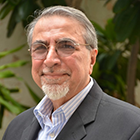

Gautam Mahajan, President of Inter-Link; Founding Editor of Journal of Creating Value at Inter-Link
Look at almost any plastic soda bottle, and you will find that it stands on five ribs that are integral to the walls. The invention of the “petaloid base” in the 1970s offers crucial insight into an innovation process that is highly relevant to business today, and to the growing movement away from functional roles and toward value creation. Because pressurized plastic expands like a balloon under pressure, bottles at the time were two-piece products that stood on a rigid cup – and efforts to create a one-piece bottle had cost tens of millions, without success.
Gautam Mahajan—the co-inventor of the petaloid base, then head of research and engineering at Continental Can— told BPI that his team solved the problem by reframing it in this way: where does the bottle want to go when under pressure, and using the concept of entropy, where everyone including the bottle resists being forced into an ordered state? It had been assumed in the industry that the bottle would need an incremental innovation, and that the machines that make them would require an expensive disruptive innovation—since they would have to create far more pressure to force out those five bulges. Mahajan proved the opposite: the disruptive petaloid solution changed the entire industry, while the machines needed only affordable shock-absorbing improvements, and timing changes.
Now a leading author and thought leader, Mahajan moves executives and academics globally to his belief that the purpose of companies is not to generate profit, but to create value—where profit and competitiveness are by-products. “We all know the purpose of attending college is education, not grades. Grades are a measure of how well you have studied,” he says. “Why then do business leaders still insist that the purpose of a business is profits? Indeed, why do we study for a Masters of Business Administration when it should be a Masters in Value Creation? Everything is process-driven at present, but we want the mind-set to be changed.”
Mahajan’s new book, “Value Creation: The Definitive Guide for Business Leaders”, was introduced this month by the Director of the Indian Institute of Management in Bangalore, and received high praise at a recent business literary festival. Gautam is setting up Value Creation Forums around the world and catalyzing colleges to conduct research on Value Creation. He believes values create value, and that efforts beyond formal job descriptions—efforts as small as a smile— generate brand equity for both the employee and the company.
Mahajan is now the Founding Editor of the Journal of Creating Value, which enables academic research become more responsive and relevant to business practitioners, while promoting value creation as the new “true north” compass heading for executives. This approach echoes recent findings at Harvard Business School, in which Michael W. Toffel noted that, “The lack of practical relevance of much of our research might suggest that few of us also have the ambition to improve the decisions of the managers and policymakers whose actions we study.” The business leader who Harvard quoted on the issue—Donovan Neale-May, executive director of the Chief Marketing Officer (CMO) Council—also noted that, “There is often a disconnect between practitioners and academics, who tend to be far removed from operational complexities and market dynamics”.
“I see myself as a generalist, as someone who has created and who thinks differently, who doesn’t get stuck with the run of the mill thinking,” says Mahajan. Previously, he was President of the Indo-American Chamber of Commerce, which is the only bilateral chamber between the US and India, and includes 14 offices between the two countries. He is also President of Inter-Link India and Customer Value Foundation and went on to become a leading consultant to top Indian companies, as well as the author of three seminal books on value. Mahajan told BPI that his consistent advice to innovators is to ban any concerns about cost when at the early, explorative end of the innovation process. Conversely, he also advises executives to free themselves from the fear of making incremental increases on the prices of their products, since customers will pay for value.
Mahajan poses a fundamental thought challenge to companies innovating in areas like customer experience and “customer journey”—where customers are provided ever-better experiences when returning defecting products. “They forget that customers do not want that journey in the first place,” he says. “Why not rather innovate toward zero complaints, and zero product returns?”
How do you build organizations and cultures that embrace innovation and change?
Value Creation is a distinctive mind-set. It is a mentality driven by enhanced self-esteem, awareness, and pro-activeness. It goes beyond just doing your job, it is doing something extra. Value Creation is executing proactive, imaginative, or inspired actions that increase the net worth of products, services, or an entire business. This creates better gains or value for customers, stakeholders, and shareholders. Value Creation stimulates executives and business leaders to generate improved value for customers, driving success for the organization; it creates customer-conscious companies.
Value Creation Forums have been started in the US, Europe and Asia, along with Value Creation research. Programs are underway to modify MBA teaching to become less functional and more value creation oriented. The role of an executive is not just to be a good manager, administrator, or a good efficiency expert; his or her role is to create value. Ahead of my most recent book, I realized that value is completely misunderstood. Everyone has a meaning for it—some think value means price, benefits, or importance— you can think of it in any way. In business jargon, value is creating financial benefits, and for people around you, which will eventually create greater financial benefit for you. You cannot set out and say you’re going to create value for yourself; you have to create value for others, such that they recognize you are a person of greater value.
You hear words like CRM, customer satisfaction, customer experience, customer journey, customer this and that, yet all are only one part of what the customer is looking for. When you start investing heavily in things like customer experience and customer journey, you are essentially saying that they are very important—and they are—but you forget the context of their importance.
Once I have bought a cellphone, what is the experience I really want? I want it to work; I don’t want to waste a lot of time on maintenance. The moment I have to go back to the company—and that’s the experience companies are investing on improving but not the experience I as a customer want in the first place—I am making an extra journey. I just want to be left alone. Companies tend to glorify a journey that customers don’t want in the first place instead of making sure I do not have a problem. The real thing they should be working on is how to prevent that journey. Companies should be innovating toward zero complaints, toward zero defects.
It is easier to give examples of value destruction because they are so obvious. Value creation in a very simplistic sense is everything that goes beyond your job. You could be an accountant who does efficient work, you can’t fault his numbers, but the guy comes up to you and says, you know the tax laws are going to change and maybe we should do something with our investments and our accounting practice so we get an advantage. He’s done something extra. Everyone whose career progresses is creating value, but often he does not know that because he is doing it unconsciously. If you were conscious about it, you might create a little more value, and might destroy a little less.
Stephen Vargo is on the board of our journal, and he coined the phrase, ‘service-dominant logic’. Before that, there were other concepts, but he said no, it is not about products. Everyone is serving everyone and the product is just part of the service. This year, there might be thousands of papers written on service dominant logic, talking about value co-creation, but few people seem to know what value co-creation is. Many see it as some kind of a vague thing that is nice to think about.
We first started a journal that addresses both academics and practitioners: that’s a difficult mix because academics like to write in journals, and practitioners generally don’t like to write. They like to read. What we want is for academics to write in the way that business people can really understand, that is relevant. Then we encourage the practitioners to use this. On the other hand, we want practitioners to write about things that make academics pay notice. So if I write about zero complaints, they may wish to do research and find the best way to get to zero complaints. The second thing we have done is start Value Creation Forums around the world, and we have leaders in their fields come together and discuss value creation.
We set up one in the Benelux with academics and practitioners, and many universities in the Netherlands came together and discussed three things: one, how can you create value for the student in the present courses. The second was to look at courses like HR and IT and see if you can just add one lecture on value creation for those courses. The third was to have a general management elective which is based on value creation. If you look at HR, it is probably one of the most important functions in the company since people--employees, partners and customers— are really important. The question I always ask is, ‘Why don’t HR guys become CEOs? Why are they called a staff function?’ That is because they do their functional work; they really do not do their value creation work. Once they start to do it, they begin to create immense value for the company.
We have asked a college in India to look at values and value—what you stand for, such as ethics, morals, and integrity). The idea is that if you are a college that talks about values, do your students who become teachers do better than teachers for whom values were never inculcated? There is a professor at Wharton that does customer lifetime value; we want to work together so that he can correlate customer value-added with customer lifetime value.


Andria Long, VP of Innovation at Johnsonville
Andria Long - VP of Innovation at Johnsonville Sausage - believes that effective innovation is, most centrally, about delivering on the ideas which actually solve consumer needs in a differentiated way. When it comes to innovation, her first question is: "what differentiators are consumers actually willing to pay for?"
How do you build organizations and cultures that embrace innovation and change?
We are a deeply entrepreneurial company, founded by a family of entrepreneurs and we are still family-owned today. It’s no accident that we are ranked number one in our category. Ideas are not the hard part; rather, the challenge arises from actually delivering on those ideas.
Everything can be made better, and I do mean everything. Differentiation is critical, but we’ve found that you can skip some traditional steps in innovation: weeding through ideas and holding ideation sessions, and waiting for “perfect information” can hold up the process needlessly. We are focused on the front end – delivering on real insights of what consumers need.
In the CPG industry, driving competitive advantage from innovation techniques is all about figuring out and meeting a consumer's unmet need in some new or different way. It is learning how to balance the risk and reward of how much you know with the amount and depth of information and research you need in order to make a decision. You're never going to have perfect information. You need to achieve that precarious balance of using good business judgment combined with enough consumer research to confidently approach the market.
The success we’ve had with the Fully Cooked Breakfast Sausage is a great example of delivering against a trifecta of insights. We found that convenience really is key for time-pressed consumers. We also thought about how consumers actually use products. It turns out that not everyone eats 12 sausages at a time, so we used re-sealable packs. And consumers want to see their foods, so we use clear packs. In essence, we lean in on where and what we need to know versus what is nice to know. Companies that do this well will have competitive advantage over others in their industry and will have greater speed to market.


Charles Lusk, President & Co-Founder at Onsite Dental Solutions
With both corporate wellness and elite staff retention increasingly critical for large enterprises, President Charles Lusk and his partners at On-Site Dental Solutions have pioneered a game-changing model that is solving multiple challenges at once.
It turns out that in an economy where employee populations are best treated as treasured communities, an on-site dental suite offers far more value than an additional amenity to the gym and the company laundry.
How do you build organizations and cultures that embrace innovation and change?
We’re very proud of our title as the first fully dedicated provider of turn-key dental suites. We sought to create a care delivery model for dentistry that previously did not exist in the same form, quality and packaging for campus environments. We wanted to bottle the magic of private dental practice and drop it into corporate settings in a way that is aesthetically pleasing, and customized to those settings. We love the way clinical settings of every kind are trending more towards aesthetically pleasing environments as opposed to sterile and impersonal settings as found in days gone by.
We like to think of ourselves as pioneers in this area. Dentistry is perhaps the most interpersonal form of healthcare, since the services are provided “face-to-face.” While we are unable to eliminate every element of that experience, we strive hard to control the things within our reach to positively impact the clients senses. But the value-adds have been game changing too. We know that a filling today avoids a very costly crown tomorrow. But there is also a high correlation between a lack of routine dental care and large medical claims involving chronic disease later on.
One of the most valuable commodities is time, and employers are measuring productivity in terms of not just absenteeism, but also “presenteeism”, which involves remarkably significant losses – the degree to which they don’t have fully engaged employees within the workplace. If you have toothache, it's probably a major reason why you’re not mentally engaged.
Also, a lot of our clients are really interested in optimal recruitment and retention – and they know the millennial generation is looking closely at the work environment.
Having a boutique dental office on-site goes a long way for clients in communicating the message that we really care about our community. In fact, we do frequently have prospective employees come into our offices, because the employers are very proud of these amenities.
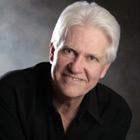

Thomas White, Co-Founder & CEO at C-Suite Network
Thomas White is a co-founder and CEO of the C-Suite Network, which offers services and programs to connect business leaders. From invitation-only conferences, custom-tailored content, C-Suite Radio and C-Suite Television, to the educational programs from C-Suite Academy, the network aims to cover the diverse needs of high-performing professionals. Prior to C-Suite, Thomas started 10 companies in the fields of technology, publishing, market research and corporate consulting. He also holds four patents and is co-author of a book on business process technology, executive producer of radio programming and a speaker.
How do you build organizations and cultures that embrace innovation and change?
Leadership must allow people to take risks without fear of being fired. Companies only innovate when they are willing to go outside the box. Out-of-the-box thinking allows organizations to see new opportunities and execute against those opportunities. Change happens when leaders realize they can no longer maintain their vision through status quo.


Clinton Phillips, CEO at 2nd.MD
Voted one of Houston’s “40 under 40” business stars by Houston Business Journal, Phillips has founded and grown a company which is changing the game for consumers in the healthcare field. In fact, in September 2014, PBS named 2nd.MD one of the Most Innovative US companies. Whether solving the most complex medical case, serving the poorest in Africa, or speaking at MIT, he is determined to make healthcare ridiculously easier, and more effective, for millions of families.
How do you build organizations and cultures that embrace innovation and change?
Medical knowledge is doubling every two years and most people are receiving poor, conflicted medical information. 2nd.MD's first goal is to make the ability to reach medical specialists more easily accessible. For example, our members can now enjoy a video consultation with a top specialist from home within three days, getting remarkable clarity and up-to-date information regarding their condition. We are combining high-tech with high-touch, and the marriage is beautiful. Healthcare gets faster, easier and more personal.
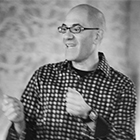

Steve Hoffman, Co-Founder & Captain at Founders Space
Steve Hoffman is a virtual midwife to the future of humankind at Founders Space. “Captain Hoff” doesn’t just predict a world in which computers replace accountants and IOT chairs automatically adjust to your personal dimensions, but he actively selects and empowers the tech innovators who are shaping these kinds of revolutions. Named a Top 10 incubator in its first year of active mentorship, the Silicon Valley-based and globally focused accelerator is helping to mature hyper-innovative tech companies which could change our lives.
How do you build organizations and cultures that embrace innovation and change?
We've been innovating on the incubator/accelerator model. Instead of just adopting the standard 'Y-Combinator' model, which is meeting start-ups once a week for 3 months followed by a “Demo Day,” we spent 18 months interviewing start-up founders and asking them what they'd like us to do differently. Here's what we learned:
a) Three months is a long time to wait for a Demo Day. Most start-ups apply to their accelerator several months in advance, and then if they get accepted, it’s another 3 months until they actually get to pitch investors on Demo Day. That means that many start-ups must wait 6 months or so from the time they first apply until they are in front of investors. In half a year, everything changes: competitors, market conditions, funding trends, etc. A start-up can miss their window by waiting. Founders Space solves this problem by having Demo Day at the end of the first month.
b) The second issue founders have with the traditional model is being committed to stay in Silicon Valley for 3 months during a program. This is a big issue, especially if the start-up is coming from overseas and has employees, family and customers back home. Founders Space solves this problem by having a more condensed, intensive program. Instead of having mentoring and training sessions one or two days a week for three months, Founders Space has them every single weekday for four weeks, followed by Demo Day. This way startup founders can move quicker and get the same benefits.
c) Lastly, the Y-Combinator model ends after three months, leaving start-ups on their own. It turns out start-up founders have more questions after Demo Day than they do before. But most programs end after Demo Day. Founders Space solves this issue by allowing startups to continue to attend all mentoring sessions and workshops for an entire year after Demo Day. This way startups can receive on-going support when they need it most.
We work with a lot of corporations who say they are innovating, but when we ask them to sacrifice revenue, they recoil. The one strategy that we propose to our partners is to reward innovation with virtual dollars. These dollars count as real dollars, but they aren't actual revenue. This way managers can justify spending time on innovative projects.


Pieter Nel, SVP of Operations at YouNow
Described as “a Renaissance man of the digital age,” Pieter Nel – Senior Vice President of Operations at YouNow – is also a pilot, a yacht skipper, a mountain rescue volunteer, and a MIT-award-winning entrepreneur. Previously, the South African-born executive and engineer was the CTO who helped propel the massive early growth of Africa’s largest social network, Mxit – which, at one point, was larger than Twitter.
A new profile on Nel on BPI’s sister platform, the SABLE Accelerator, adds: “The 40-year-old is a key innovator in three of the most coveted fields of the new economy – virtual currencies, machine learning and monetization strategy – and he’s doing it all for YouNow: a platform which defines the social connectivity revolution.” This live video social network is even disrupting the cable TV space, having recorded average active user times for its millions of subscribers at almost 50 minutes every day.
Nel positively boils with ideas for disruptive technologies – and told BPI that he has retained his passion to innovate on mobile platforms to empower African entrepreneurs. Is this Q&A, Nel also speaks about the potential for “smart farming” in Africa, enabled by drones and smart data. He has also harnessed his experiences of leading dozens of mountain rescues for a Thought Leadership project that principle tech founders and CEOs should use in navigating the fast-changing market landscape.
How do you build organizations and cultures that embrace innovation and change?
Open communication and easy interaction between people of different backgrounds always have a net positive impact on society. We saw this at Mxit where we allowed millions of users to interact and communicate at a mere fraction of the cost of an SMS. Once again at YouNow, we are using the video medium to allow users from all over the world to socialize, meet friends and exchange ideas. It’s an extremely interactive platform – you are chatting directly with the broadcaster and fellow viewers, live. There is this powerful need for social interaction, to share ideas and opinions, and this is a fantastic channel for that impulse.
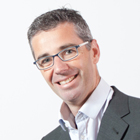

Francois Ragnet, VP, Innovation Development at Xerox Services
With more than 15 years in R&D, Francois Ragnet specializes in successful transfer of innovation into Business. More recently, he focuses on pre-sales and is a technology evangelist, as well as managing an R&D group within Xerox Global Services in charge of transferring breakthrough innovation. Francois has spent almost his entire career at Xerox, and understands Xerox's innovation strategy from many angles. For the past 8 years, he has focused his innovation experience at Xerox Services, and received the Netherlands National Contact Centre Association (NCCS) Innovation Award for the technology developed & deployed by Raganets’ team in call centers in the Netherlands. He also currently holds 21 patents in the United States for various technologies he has developed since 2008 with various team members within Xerox. Francois holds a Masters in Telecommunications from the Institut national des Télécommunications in France.
How do you build organizations and cultures that embrace innovation and change?
Xerox has a long, well-known innovation tradition; it’s widely known for producing game changing inventions in particularly the 70s and 80s, with light lens copiers for instance, and the mouse. But, historically, we were not always so effective in capitalizing on those innovations. But while the culture has been maintained, and deepened to all levels, Xerox has transformed dramatically in recent years. We are now the leading enterprise globally in BPO services in areas like healthcare, financial services, education and even transportation.
In terms of traditional innovation and also blue sky research, we have 5000 scientists and engineers generating truly amazing things. The Xerox Innovation Group is a dynamic network of centers worldwide, including in the US, Canada, and France. We also have our major partnership in Japan with Fuji Xerox, and a center in India to capitalize on emerging markets.
We have a strong innovation culture company-wide, making sure the blue sky research we have going in Xerox Innovation Group is repeated and amplified across our services business. Some of this work does not relate directly to our core business today, but we want to keep that flexibility of researchers to come up with totally new ideas.
Innovation has been incremental in the BPO area, with profound results – you don’t have millions to spend on R&D in the service world, but the nice thing is that it is much more disruptive; you can innovate without multi-year projects. On the downside you have to be much quicker – you don’t have multiple years to develop those inventions.
Recently I’ve been involved more in customer care – an area we’ve invested quite a lot in, and where we place a lot of our innovation focus. Evidence of this is the Call Centre Association Innovation Award that went to our Xerox Virtual Performance Indicator product in 2013 – which is now deploying across the corporation, and which we plan to sell to external customers.
The indicator is really a small innovation, technically – but it does make a huge difference, once you make it right, you make 50,000 agents deployed more motivated, more productive, and more into their job. We have invested a lot in gamification – we’re motivating those agents by bringing an element of games and fun into their day-to-day work. They have key performance indicators, but we don’t want it to be a case of ‘Big Brother watching you’ – we want to use gamification in a positive way, and get people into their jobs. We are finding that agents are enjoying the spirit so much that they virtually belong to the customer company.
Turnover rates can be 100% for traditional call centers, with people too stressed or bored. With these technologies, you ensure they stay longer; they are more competent; I suspect there is even less sick leave taken. We have created a real sense of community and engagement in the call centers.
I believe we are able to make innovation work in a very difficult domain – Business Process Services - but are also able to deliver economies of scale, and even create potential new business for our customer.
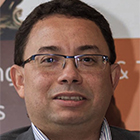

Harry Barraza, Head of Open Innovation at Arla Foods
Serving as Arla’s Head of Open Innovation, Barraza is a chemical engineer by training who is passionate about collaborations between enterprises, academia and entrepreneurs. He studied intellectual property law to arm himself with a tool that has since proved critical in his work on open innovation, both at Unilever and now at Arla.
How do you build organizations and cultures that embrace innovation and change?
Historically, an export mindset, the focus on quality and the embrace of innovation have been competitive advantages for Arla. In general, a strong export focus in Sweden and Denmark was a big difference from co-operative movements in other countries. In Denmark, for example, one driver was exports to the UK of butter and bacon, which originated two of the biggest companies in Denmark today: Danish Crown and Arla
I see the DNA of the company as not just being a co-op, but innovative in terms of product quality. That continues today – to be able to maintain our dominant position in markets like the UK, and bolster our ability to enter new markets in China and the Middle East and U.S. as well. Particularly in China and the Middle East, the credentials of being high quality about products really helps our exports – stemming from the famously stringent laws we have (in Scandinavia and Europe).
In addition to having strong dairy products, we are also manufacturers for other companies, so we also need to be competitive in technologies and efficiencies for production.
What I do is often researching about research – how can we find new ways to interact with other types of research partners, such as academic partners and smaller companies, to unlock ecosystems of innovation. A big game changer for us has been the ability to translate the Scandinavian traditions of dairy products and foods to deepen appeal within diverse global markets. One of these products is Skyr, which is based on an old Nordic tradition: translating Skyr according to the taste of other parts of world, like the UK and Holland – that’s been a game changer. Another has been the change in formulation in some of our high protein products, which have allowed very successful recent launches in China.
We are also moving toward more strategic partnerships with universities. Last year, we partnered with Copenhagen University and Aarhus University to launch the Arla Dairy Health and Nutrition Excellence Center. I believe dairy can unlock major global problems in terms of nutrition, and we have only begun to tap the potential applications of natural milk proteins. We actively seek out disruptive ideas from both internal and external sources; connecting with small companies and entrepreneurs. Our approach is based around ‘technology push; consumer pull” – so that potential new products must see a deep collaboration between from both scientists and marketers before launch.
Last year, we put together the Arla Food Innovation Challenge, in partnership with the Creative Business Cup. This challenged entrepreneurial ideas in competition, and brought winners to Copenhagen – and we were able to see fantastic ideas from preexisting businesses as well as from early-stage entrepreneurs. Stimulating entrepreneurs in this way gives us a new way of thinking about our products – providing new insights from external sources. I am very passionate about working with small and medium enterprises, which is what we will be pushing going forward.
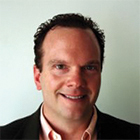

Tim Gilchrist, Fellow at HITLAB
Tim Gilchrist is a Fellow at The Health Innovation Technology LAB (HITLAB.org), which is part of Columbia University and conducts grant work in healthcare research and technology, consults to organizations, governments, startups, and hosts the Health Innovators summit (hitlabsummit.com). HITLAB helps organizations ideate, create, and evaluate innovative technologies to improve healthcare around the world. Tim's involvement with the Lab and Columbia stretches back to 1999 when he first started guest lecturing on health informatics.
How do you build organizations and cultures that embrace innovation and change?
One of the areas I am most active in is the application of machine learning to health care, specifically interpreting individual’s social media feeds and determining their health status. This sounds odd but social media provides a unique environment where people openly discuss their personal lives: how they feel, what they eat, their activities, etc. Social solves a big problem in health data in that it is immediate where most health data are not immediate and often take months to gather and process. At the same time hospitals and individual physicians are moving from fee for service to quality based programs that place emphasis on health outcomes, not how many procedures were performed. This tectonic shift in health care creates a need for information regarding the health of people around; let’s say a hospital, not just the people who come in the front door, but the ones living miles away.
To meet this challenge I developed a system that listens to social media posts within a certain geographically defined area and deconstructs the stream of posts to predict who displays signs of having diabetes. It works by looking for word patterns in the text of the post and then matching that information to the person’s profile information. In tests involving thousands of posts, it is 74% accurate. Some of the interesting patterns that emerge is that diabetics tend to have many friends on social media – over 1,900, but they don’t tend to status very often – less than 65 times in a year. They also tend to say really funny things regarding their disease. Actual tweet:
“Lets play a game called how many times will my relatives ask about my diabetes. #byyyyeeee”
This system could be helpful to health providers who are looking to engage with at risk populations as problems emerge, not just when patients end up in the ER.
The HITLAB is also active internationally and is part of (MOTECH), the groundbreaking mHealth initiative designed to increase the quantity and quality of pre- and post-natal care in Ghana.
MOTECH uses mobile phone technology to improve maternal and child health knowledge and health-seeking behavior in rural Ghana. The program’s Mobile Midwife Initiative provides pregnant women and new mothers with information on pregnancy and infant care, nutrition, malaria, maternal and childhood immunizations, and family planning, as well as reminders to seek timely health care. The initiative offers these services in either SMS or voice option, in multiple regional languages. MOTECH also helps community health workers identify women and newborns in their area who need healthcare services, while enabling these health workers to cut down on paperwork and increase accuracy by giving them the ability to enter patient data via their mobile phone.


Shannon Lucas, Director of Innovation at Vodafone Global Enterprise
As the Director of Innovation at Vodafone Global Enterprise, Shannon Lucas focuses on empowering global Fortune 500 businesses to stay agile, competitive and sustainable.
One of the world’s largest telecoms companies, Vodafone has mobile operations in 26 countries; partners with networks in a further 55; and provides fixed broadband operations in 17 markets. As of June 2015, Vodafone had 449 million mobile customers.
Lucas is passionate about developing ecosystems which trigger collaborative innovation between multiple stakeholders, and has presented her game-changing vision at TedX.
Armed with the unique leadership and team lessons of having served as a mountain rescue volunteer, the Bay Area disruptor developed her career with cutting edge technology experience at companies like Microsoft and T-Mobile.
At Vodafone, she is part of the core team that focuses on a global program to generate innovative solutions by turning enterprise customers into collaborative partners.
Within the enterprise, Lucas has not only supported dynamic intrapreneurship and a broad culture of change, but has invited employees to take on the role of customers in a program which has generated transformative ideation and engagement models.How do you build organizations and cultures that embrace innovation and change?
The Vodafone Innovation team is fortunate to be positioned at the intersection of the world’s leading total telecommunications company, innovation and relationships with the largest global enterprises. Mobility is the heartbeat of today’s innovation. While not every innovation is built on mobile, mobility is transforming the way the world operates. This gives us the freedom to embark on an innovation journey with our customers.
We run approximately 100 customer innovation workshops each year and take the radical approach of having an open conversation without an agenda and ask big questions starting with, “What if?” We are confident that no matter what emerges, we can help our enterprise customers on their innovation journeys. This approach shifts the relationship from customer-vendor to collaborative partners. The conversation is focused on business transformation, not technology. Of course, we look at ways that technology is supporting an ever-changing world. But first we collaboratively develop the vision of, “Where do you want to be in 3 years?” At the end of the workshop, we collectively ideate solutions, refine and prioritize and then execute with a lean, agile approach. The innovation program is our think-and-do tank.
Increasingly we see disruptive ideas or solutions emerge from our workshops that cannot be tackled alone. In response to this growing need for co-creation we launched the Enterprise Studio. It’s both a physical space in Silicon Valley and a global methodology. We pull from a variety of innovation frameworks like design thinking, lean, agile, etc., but as each project is wildly unique, we have to be willing to adapt our approach. The Studio is not an “app-factory.” We tackle problems such as user-based, real-time car insurance in the UK, to financing for smallholder farmers in Africa, to holistic analytics platforms to manage supply chains.
We have a lot of experience to draw from having run so many workshops in the last few years. At the same time, we recognize this is an iterative process and we are always looking to learn from our own experiences as well as thought leaders from across the global innovation community.


Les C. Meyer, Chairman at Informed Opinion Leadership Action Group
Les C. Meyer is a results-driven serial entrepreneur, global executive leader and MBA with extensive experience in mindful innovation and self-actualization. He has demonstrated creativity in transforming health and performance improvement through innovation leadership. He has worked with many organizations to help them achieve an optimal healthy workplace and workforce and achieve functional wellbeing outcomes via science-based mindfulness, resilience, vitality and sustainability next practices. He has also implemented game changer approaches to the creation of health care delivery, innovative health policies, advanced primary care systems, planned care coordination and proactive community health assurance initiatives. He has integrated meaningful enabling technologies and consumer-centric, integrative health services for a wide variety of worldwide stakeholders.
How do you build organizations and cultures that embrace innovation and change?
We guide clients toward viewing their organization, in all facets, with a mindful innovation (MI) approach. MI is a tuned in, creative-thinking leadership engagement process — coupled with a five-step systematic approach including assessment, culture, strategy, implementation and measurement — empowering CEOs to improve the health of the enterprise and its workforce, reduce costs, improve productivity and ultimately, profitability in a global economy.
My idea of “hard-wired MI” emerged in mid-2009 as I watched CEOs working feverishly on getting their arms around their “Big Idea.” And then, watching them formulate strategic plans to transform their companies by advancing their breakthrough brainchild as a “constructive, disruptive innovation.” Over and over these leaders were relying on outdated “thriving on chaos” playbooks not recognizing the competitive imperfections in the marketplace.
The MI approach prompts quick-response adaptation when CEOs drive the process top down and encourage their people to embrace “imagining” from the bottom up — with all stakeholders striving for the competitive advantage that lies in the health of their people.
MI is moment-to-moment, surround-sound awareness of organization health achievement in action. It generates CEO imagination, ingenuity and creative execution in the boardroom. Most importantly, MI upholds the principles of disruptive innovation guru, Clayton Christensen, who introduced the criteria by which a product or service rooted in simple applications relentlessly moves up market, eventually displacing established competitors.
MI is imagining what the future could look like, identifying mega-opportunities and building game-changing ways of delivering business value to all stakeholders. We do this by focusing our attention on next generation hard-wiring MI capabilities, technologies and learning system collective impact community collaboratives that provide MI solutions to the health industry in the short and long-term.
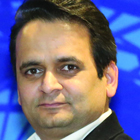

Niraj Jetly, COO and CIO at NutriSavings
As COO and Chief Information Officer at NutriSavings, Niraj Jetly and his team have pioneered a way to make healthy food both affordable and understandable, and are building a new ecosystem which is changing the game for corporate health costs and employee productivity in the process. A spin-off from corporate services giant Edenred, Nutrisavings has harnessed data technologies, nationwide grocery partnerships, research, and innovative thinking around food choices to save costs for large employers and health plans, while boosting productivity and even life longevity for tens of thousands of users.
How do you build organizations and cultures that embrace innovation and change?
When we launched, there were several research sources which showed that the health of employees depends far more on what you eat than on how often you work out - yet there were very few solutions, if any, based on nutrition. You could attend seminars on how to cook healthier; you could get recipe books; you could be coached by dieticians. But you’d generally need to leave your workspace to attend those sessions, they weren’t scalable; and they asked people to do something they were not doing already. They also did not address the fundamental problems of affordability and confusion for the consumer.
Several research papers showed that the average American finds it much easier to file their own taxes than comprehend the nutritional fact panel of a food item in a grocery store. Go and pick up any food item; I bet you will not have heard half of those words in your life. We know that sugar is generally bad for us – but it turns out that there are about 200 different words for sugar. Meanwhile, we found that there was a perception that certain brands were healthy, and certain brands were unhealthy – but that just isn’t true. There is in fact a wide range of nutritional value across the products offered by the same brand.
To decipher this confusion, we recruited a panel of dietitians, and we created an algorithm based on prior research which takes into account all food items and all nutritional information on the packaging. We were able to generate a nutritional score between zero and hundred; the higher number, the healthier the item.So for instance, our participants in the NutriSavings program can download our mobile app, scan the bar code of any food items in grocery store with their smart phone, and get the nutritional score right then and there.Using input from our panel of dietitians, users can also immediately learn what it is about that item that is good for you, and what you should watch out for.
But we do not tell someone not to buy this or that. Instead, the app will also show you healthier alternatives; foods with a similar taste, but with higher nutritional scores, as a gentle nudge in the right direction. But we also recognized that the absolute nutrition score of any food item was not as important as the change in score over time for participants, so incremental behavior change, and the ability to track that change, is the exciting game changer for large employers.
Many people do want to diet, but to do it they need to log their food intake – and who has the time to log 1000 meals per year? We can actually manage an individual’s pantry, and provide the log and the trends for them. We had to figure out a way that is scalable- so we built a network grocery stores – 10,000 nationwide - which we actually built connectivity with. Once we have permission from participants to reach out to grocery stores, we can use their rewards cards as unique identifiers and track the items they’ve actually bought. In addition to the primary benefits of health, we are passing along discounts from those stores to the members for items which show good nutritional scores – so healthy food has become more affordable.


Kate Vitasek, Faculty at University of Tennessee
Kate Vitasek is an international authority for her award-winning research and Vested® business model for highly collaborative relationships. Vitasek, a Faculty member at the University of Tennessee, has been lauded by World Trade Magazine as one of the “Fabulous 50+1” most influential people impacting global commerce. Vitasek is internationally recognized for her for driving transformation and innovation through highly collaborative and strategic partnerships. She has appeared on Bloomberg radio multiple times, NPR, and on Fox Business News. Her work has been featured in over 300 articles in publications like Forbes, Chief Executive Magazine, CIO Magazine, The Wall Street Journal, Journal of Commerce, World Trade Magazineand Outsource Magazine.
How do you build organizations and cultures that embrace innovation and change?
The University of Tennessee has been studying the nature of highly successful business relationships since 2003. Our research was originally funded by the United States Air Force with a goal to provide a pathway to long-term, collaborative success among business partners. We codified our findings into a methodology and business model that researchers coined as “Vested” or “Vested Outsourcing.” Our research first gained notoriety with the publication of Vested Outsourcing: Five Rules That Will Transform Outsourcing in 2010. In a way that book began a movement that got people interested in learning how to work better with their strategic partners. The Vested methodology is based on five “rules” that when followed create a business model that fosters a high collaborative “win-win” relationship that purposely creates and shares value so that everyone achieves the win-win.
The five rules are:
- Focus on outcomes, not transactions: Flip the thinking from a focus on specific transactions to desired outcomes – instead of buying transactions, buy outcomes, which can include targets for availability, reliability, revenue generation, employee or customer satisfaction and the like.
- Focus on the what, not the how: If a partnership is truly outcome-based it can no longer have a multiplicity of Service Level Agreements (SLAs) that the buyer is micromanaging. The outsource provider has won the contract because he is supposed to have the expertise that the buyer lacks. So the buyer has to trust the supplier to solve problems.
- Agree on clearly defined and measurable outcomes: Make sure everyone is clear and on the same page about their desired outcomes. Ideally, there shouldn't be more than about five high-level metrics. All parties - which may of course include users and other stakeholders that aren't directly signing the contract - need to spend time collaboratively, during the outsourcing process and especially during the contract negotiations, to establish explicit definitions for how relationship success will be measured.
- Pricing model with incentives that optimize the business: Vested does not guarantee higher profits for service providers - they are taking a calculated risk. But it does provide them with the tools, autonomy and authority to make strategic investments in processes that can generate a greater ROI and value over time, perhaps more than a conventional cost-plus or fixed price contract might produce over the same period.
- Insight versus oversight governance structure: A flexible and credible governance framework makes all the rules work in sync. The structure governing an outsource agreement or business relationship should instill transparency and trust about how operations are developing and improving. And, of course, of where the next threats and challenges may occur, because business happens.


Mark Drasutis, Head of Innovation at News Corp Australia
Mark is the Head of Innovation at News Corp Australia and a former executive at AOL and Yahoo. Drasutis is an established business leader and digital expert with 20 years of media and digital product experience. He is focused on defining and delivering digital leadership and innovative and creative user-centric solutions within market leading, global digital businesses. Delighting all customers of digital products is a passion Drasutis brings to his teams and organizations. He has continually driven the creative vision and customer focus of his teams. He has implemented innovative and strategic thinking, as well as thought leadership, internally and externally, within all his roles and evolved customer perceptions of the businesses.
How do you build organizations and cultures that embrace innovation and change?
News Corp is actually where the customers are, and that’s the change. Its about innovating around the proposition that content is about “and,” not “or.” In the past, customers either bought a newspaper or consumed content on mobile, or on PC, or Tele, or listened to it on the radio. Now, they are consuming content in newspapers and on Twitter, YouTube, in their cars, and on Spotify, so if you take the “and” model, it becomes about curating great, relevant content and delivering it where and how the customer needs it.
With declines of 15% circulation in Australia and 20% revenues on the newspaper side – you need to innovate yourself out of that bottle, but you need to innovate in the right way. We’ve embraced the reality that newspaper companies are never again going to own content and distribution and packaging. In fact, we don't see ourselves as a newspaper company; we are a content company.
Habits for consuming content have changed, and we can shape those habits. Do people buy newspapers for breaking news? No they don’t: because news is broken on Twitter and Facebook and then on other platforms. Content habits have changed. But job of producing great content hasn’t changed. We are recombining content in new ways for customers. We are now producing multi-dimensional long-form story telling in digital; creating a rich immersive experience in video, audio, graphics, everything. The Captivate platform in Australia allows us to build those.
For example, we produced a story around Cinderella Man: the amazing journey of an Australian man to becoming the country’s first heavyweight boxing champion. We’ve just done a great piece of footage for surfers for an angle of a surf break which you would never have seen before, using drone footage, and two surfers: one a leftie, one a rightie. So how do we get to surfers? We promote it on Facebook, we promote it on Twitter, we made a 15 second video for Instagram, and then we moved it to content for tablet.
The Wall Street Journal is doing the same thing, with amazing footage from the Oracle boat for the America’s Cup. When we have these great stories involving multiple assets, we ‘re able to quickly build rich story telling elements now that we didn’t think we could do three years ago. So it’s a case of: We’re capable - lets do more of that.
The reporters who do these pieces, like Trent Dalton, now know when they start looking at the yarn, they need a videographer, a photographer; he needs to understand how to work with a developer and designer to tell the story best via the digital channel. And that’s just one space.
On the other extreme, we just launched in Australia – news.com.au and Foxsports - on Snapchat’s new Discover platform. Once again, here’s another area where we’re atomizing our content and saying we’re going to create an edition every day which is relevant to a Snapchat customer, which is more a teen, kind of funny, laugh-out-loud type of experience.

Steven Bowman, Author & Global Business Advisor at No More Business As Usual
Steven Bowman is a noted author and business advisor. He has an extensive background in the nonprofit arena. He is one of the world’s leading governance and senior executive team specialists, having previously held positions as national executive director of the Australasian Institute of Banking and Finance, CEO of the Finance and Treasury Association, general manager of ExpoHire (Australia) Pty Ltd, assistant director of the Australian Society of CPAs, and director of the American College of Health Care Administrators.
How do you build organizations and cultures that embrace innovation and change?
Your own personal leadership is essential. From our point of view, leadership is about strategic awareness, where you are willing to be aware of the future possibilities, are nimble enough to turn to advantage any of these possibilities, and wise enough to know that your personal points of view are what creates your reality. Leadership and innovation do not come from policies, procedures or structures. It all starts with you. In the case of any organization, the culture of innovation and change starts with the CEO. If the CEO thinks they can train innovation by external advisors, workshops, incentives and rah rah talks, and the CEO does not choose this him or herself, then the culture of innovation cannot be created. And the hallmark of any really good CEO is their willingness to be strategically aware.


Lilach Felner, Founder & Managing Director at I Trust U
Lilach Felner is a marketing consultant and lecturer specializing in building customer trust. She helps companies and brands become trustworthy by injecting trust into their businesses. As a marketer of multinational consumer brands for over 15 years, Lilach has experienced first-hand the tsunami of consumer militancy towards companies and brands, social media escalation and the dramatic transition of power to consumers. Her Trustworthy Marketing Approach helps organizations and brands become more worthy of their customers’ trust in the age of open social communication.
How do you build organizations and cultures that embrace innovation and change?
First, the organization must be managed by strong leaders that know where the organization is heading, and have a clear purpose and clear goals. Second, in order to make the changes happen, the organization needs a management that "walks the walk", adheres to its values and lives by them. Essentially, an organization needs management that believes in the necessity of change, and is willing to be committed to the change and its implications. Third, rolling out the change depends on management's ability to lead and inspire its employees, to empower those who come up with ideas, nurture them and activate them as advocates. In order to execute change, the employees must be involved. This is why the management should have an "open door policy," encouraging an open flow of communication and demonstrating high levels of accessibility. Fourth, another critical parameter for rolling out innovation and change is trust. In an atmosphere of trust, innovation and speed reach their full potential.

Thomas Buckholtz, Business Advisor and Innovation Consultant
Dr. Thomas J. Buckholtz, Ph.D., has served in many executive roles including Chief Information Officer for both corporate and governmental organizations. He has made key contributions to the business, technology, and governmental innovations. He has served as an advisor to many key startups, and works as a University Extension Professor guiding workshops on innovation.
How do you build organizations and cultures that embrace innovation and change?
Let people pursue their natural curiosity and good intensions. Nudge a person's curiosity, intensions, and pursuit toward outcomes that benefit the organization, its customers and other external constituencies, as well as the person's colleagues and self. Help people overcome shyness about trying to make a difference.


Chris Hummel, Chief Marketing Officer at Schneider Electric
Chris Hummel has a 20+-year career in enterprise sales and marketing and is a globally-recognized thought leader and widely-respected senior executive in the technology industry. Chris Hummel is a true international executive, having lived, worked, and successfully led organizations around the globe, including the US, Germany, Eastern Europe and Asia.
How do you build organizations and cultures that embrace innovation and change?
Innovation is something you don’t easily teach or even force on an organization. It requires fresh and unique perspectives gained from either pulling people out of their traditional roles and comfort zones or by bringing in outside perspectives through new talent acquisition or external expertise. At the same time, executive leaders must display and encourage a strong preference for thinking ‘outside the box’ and a willingness to take risk to foster a change/innovation culture.



